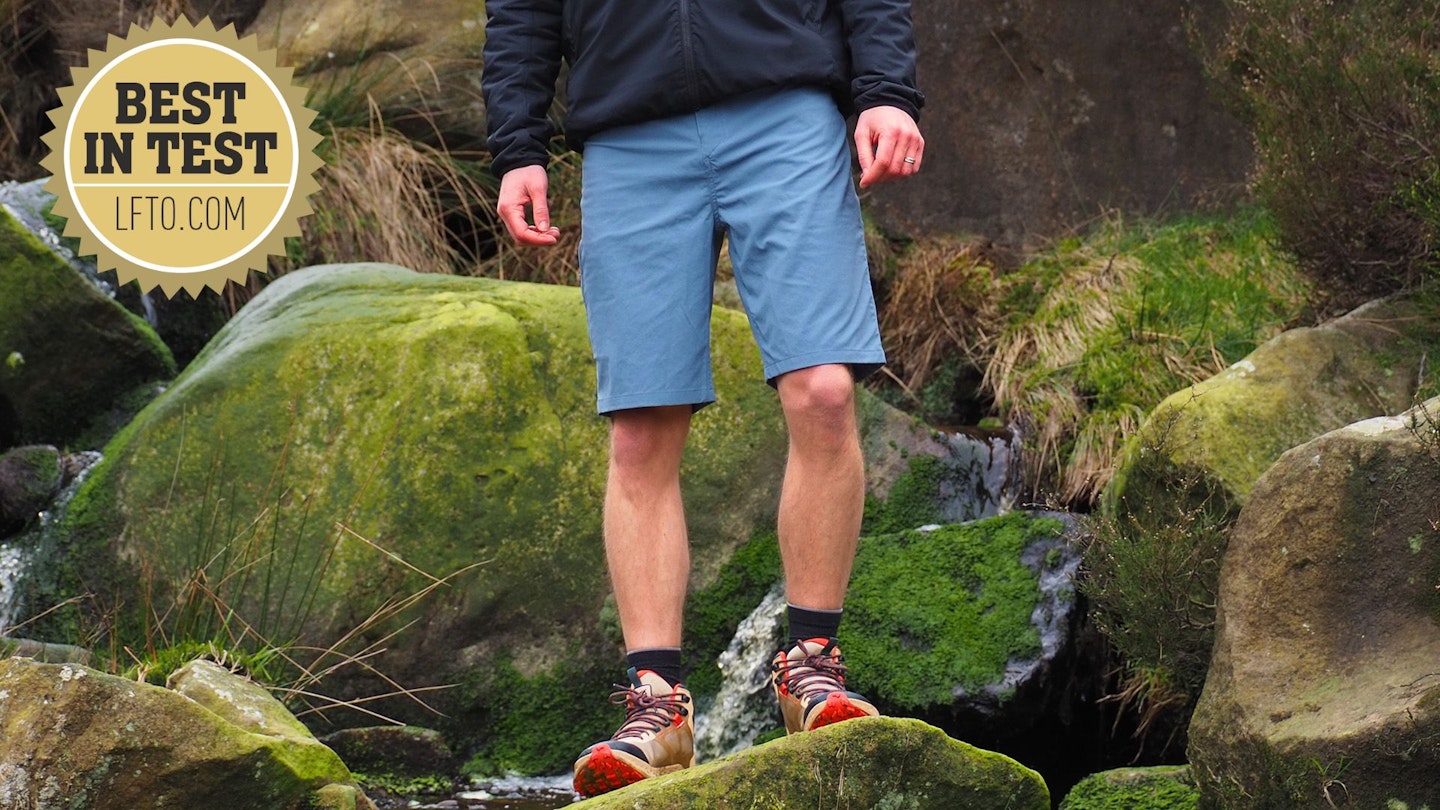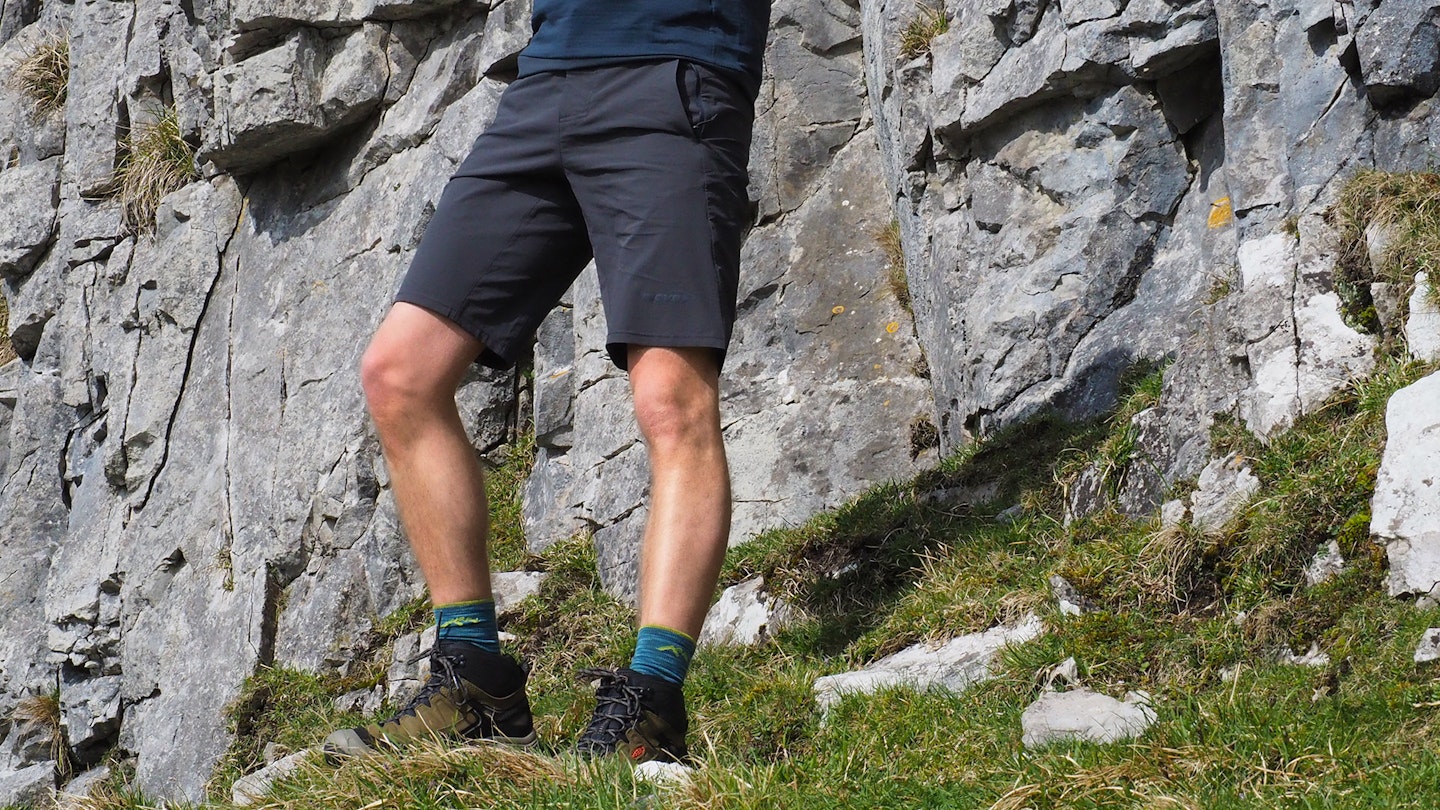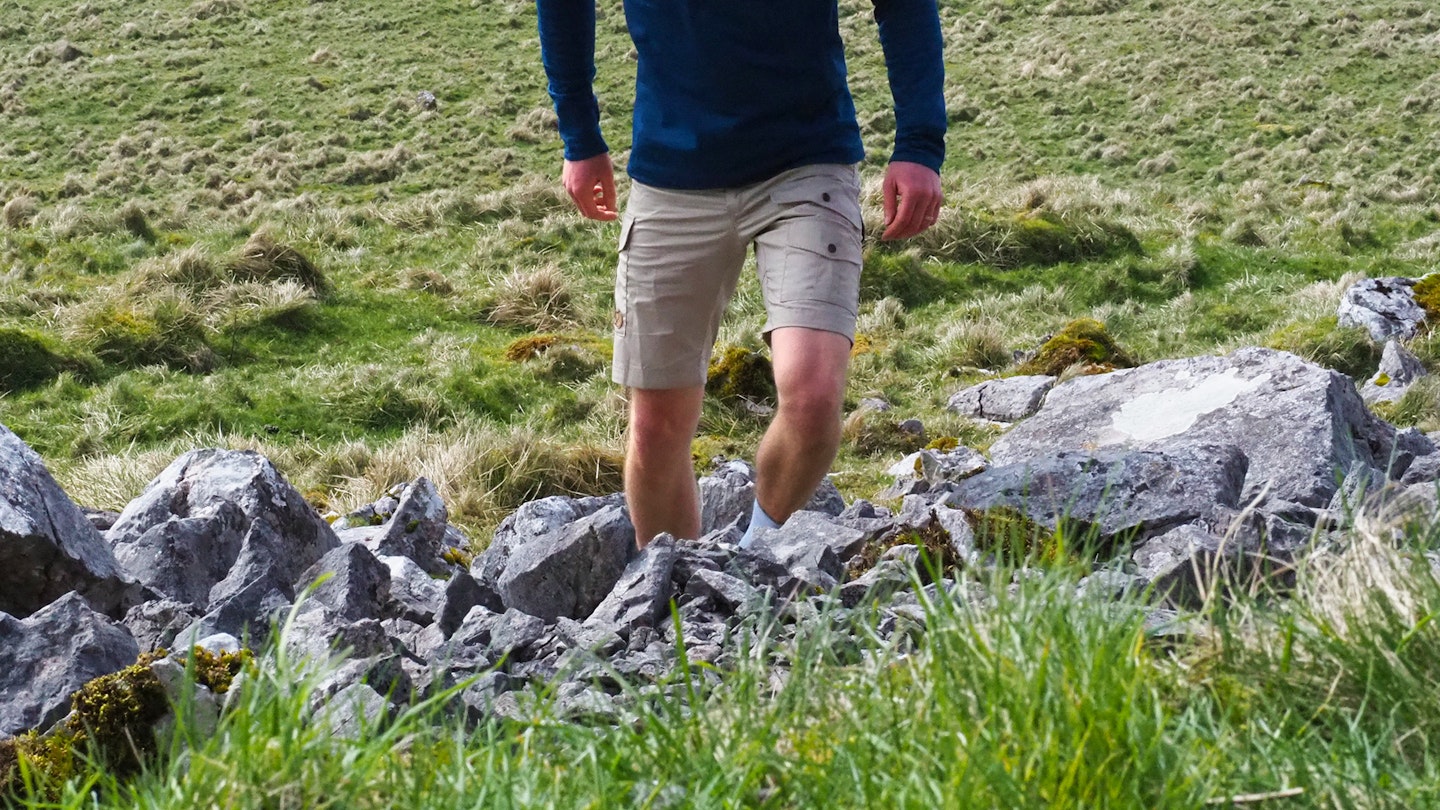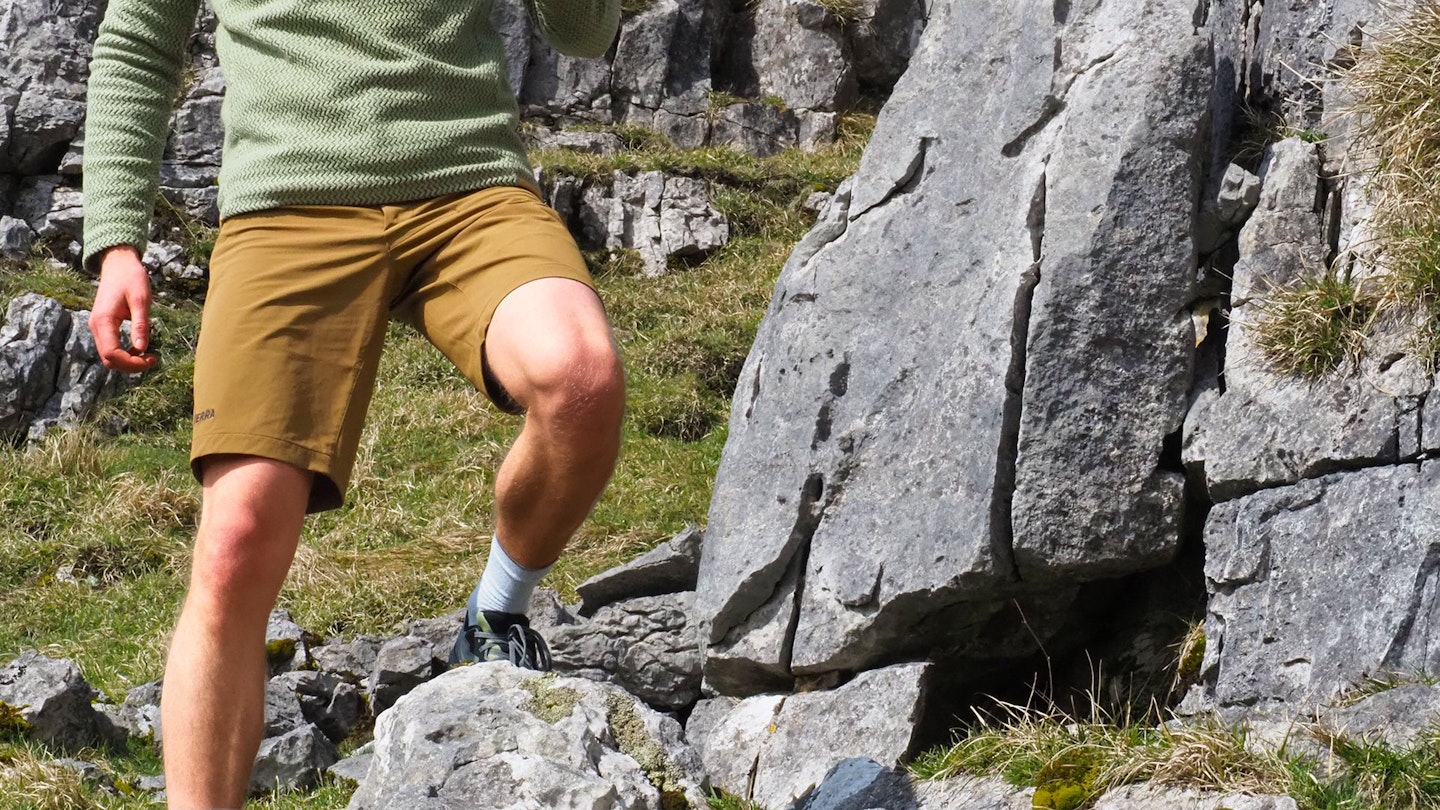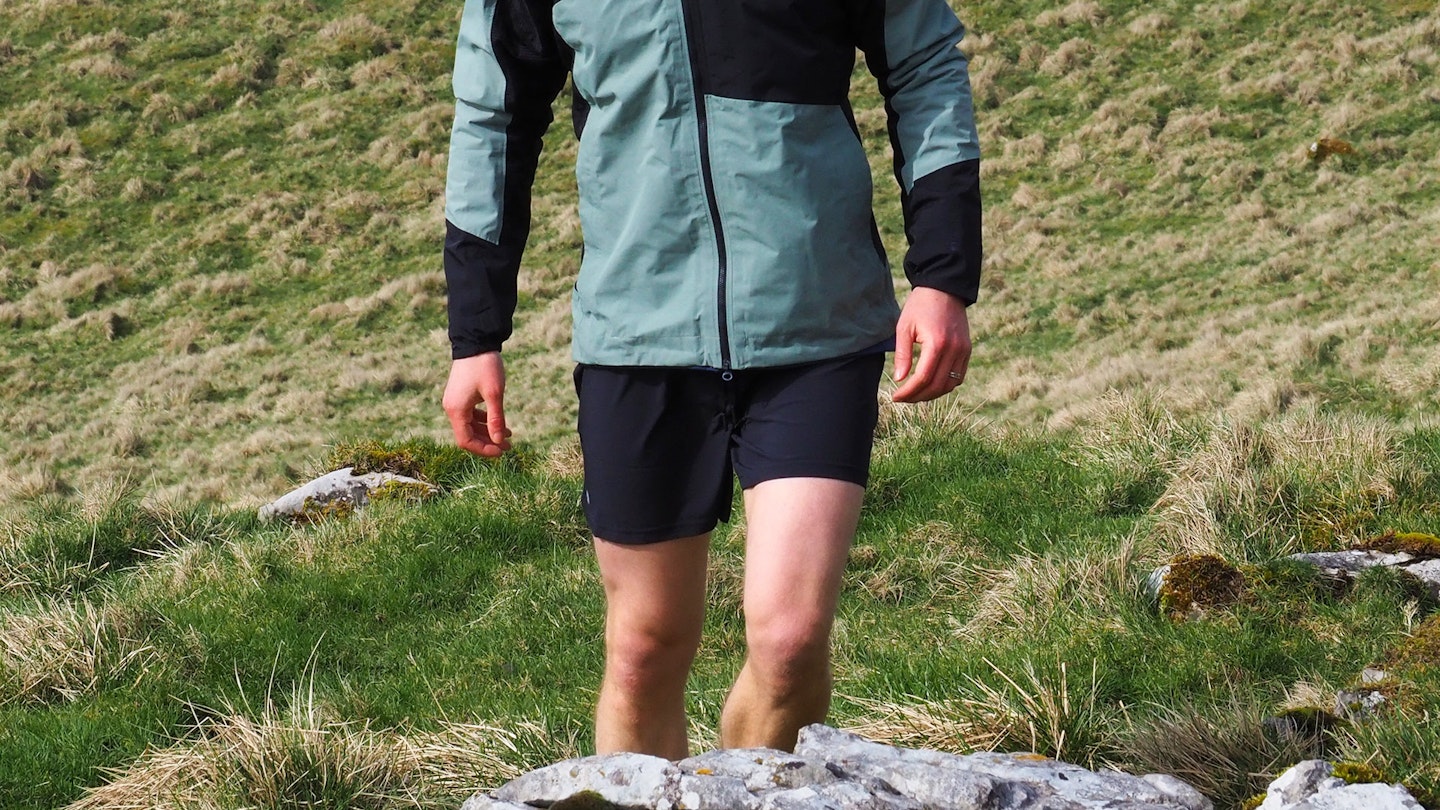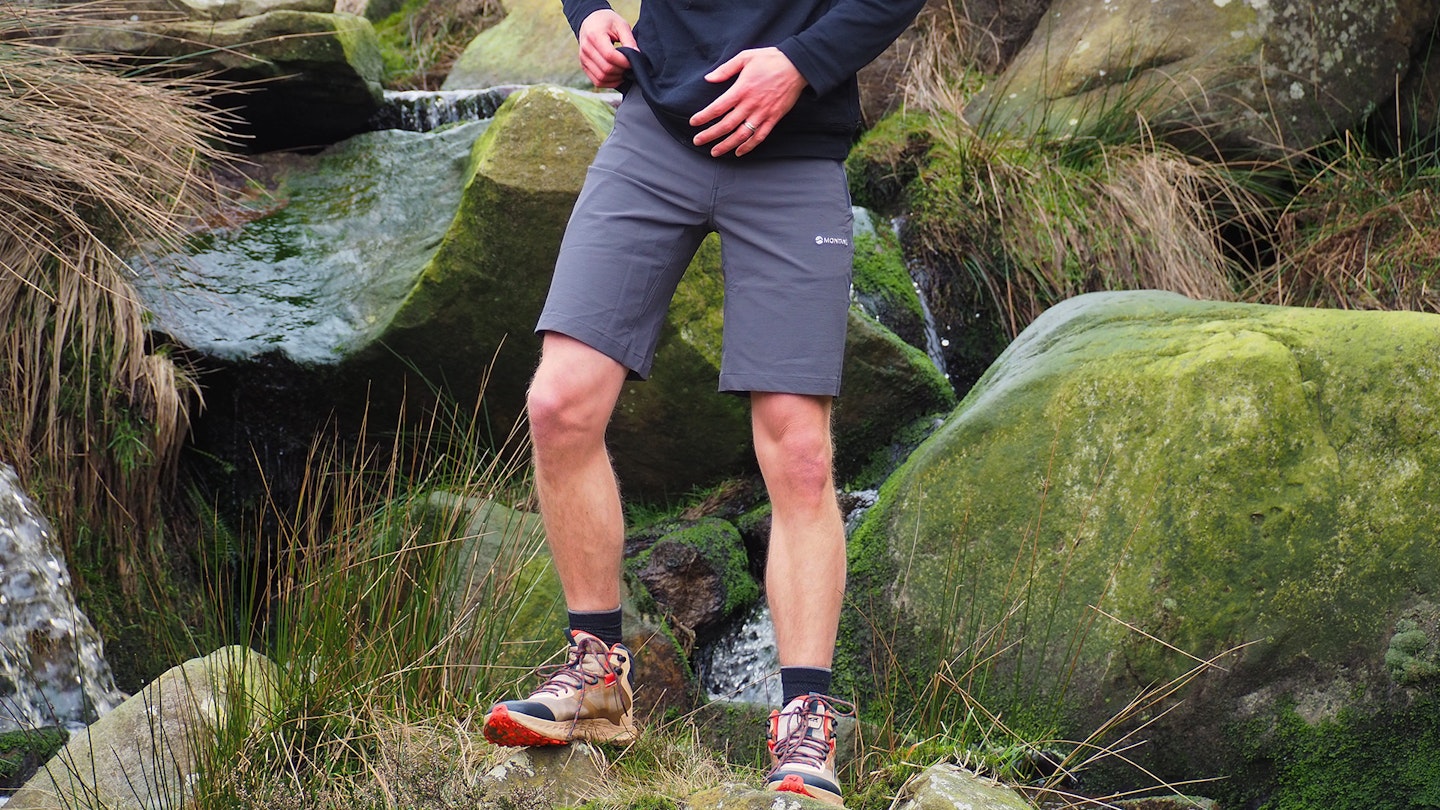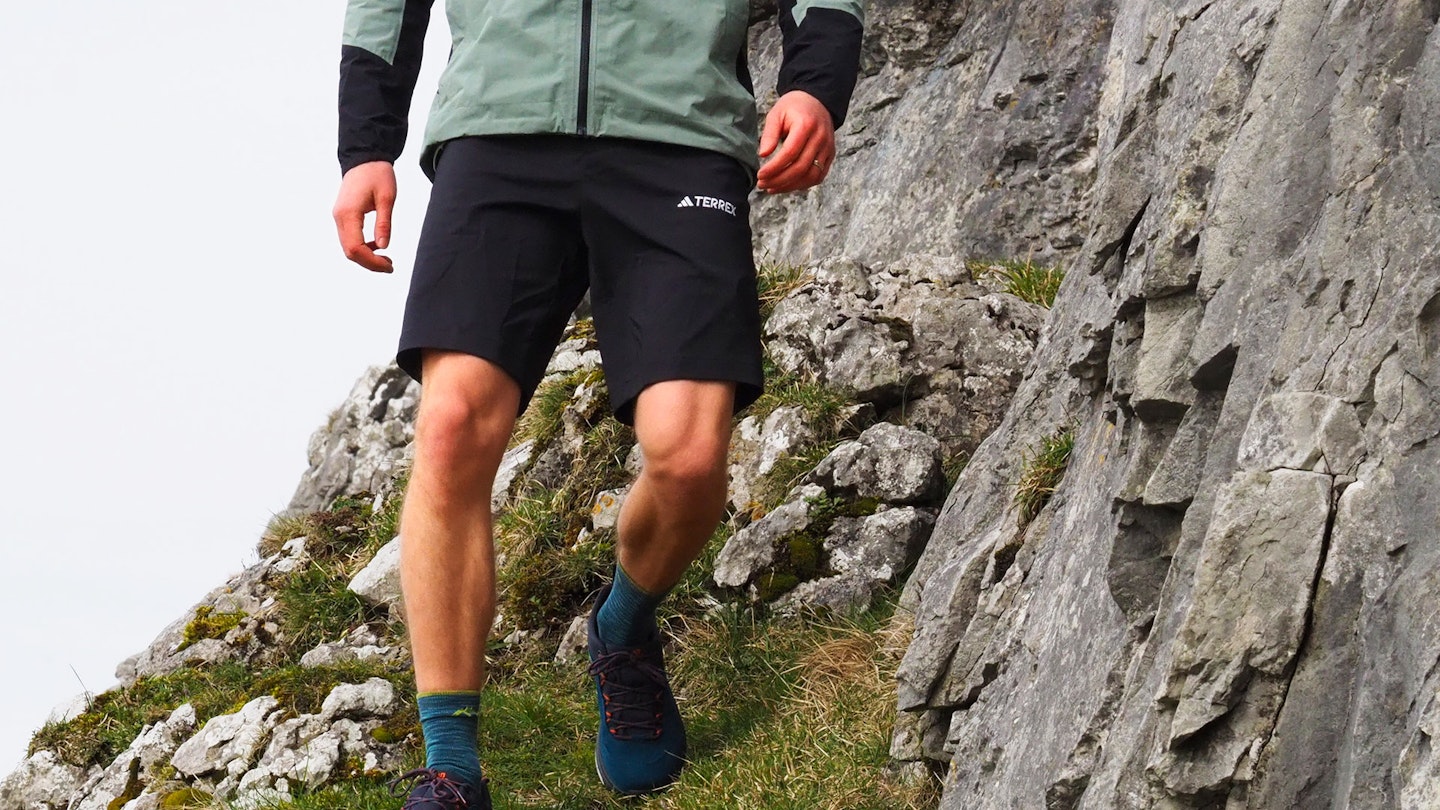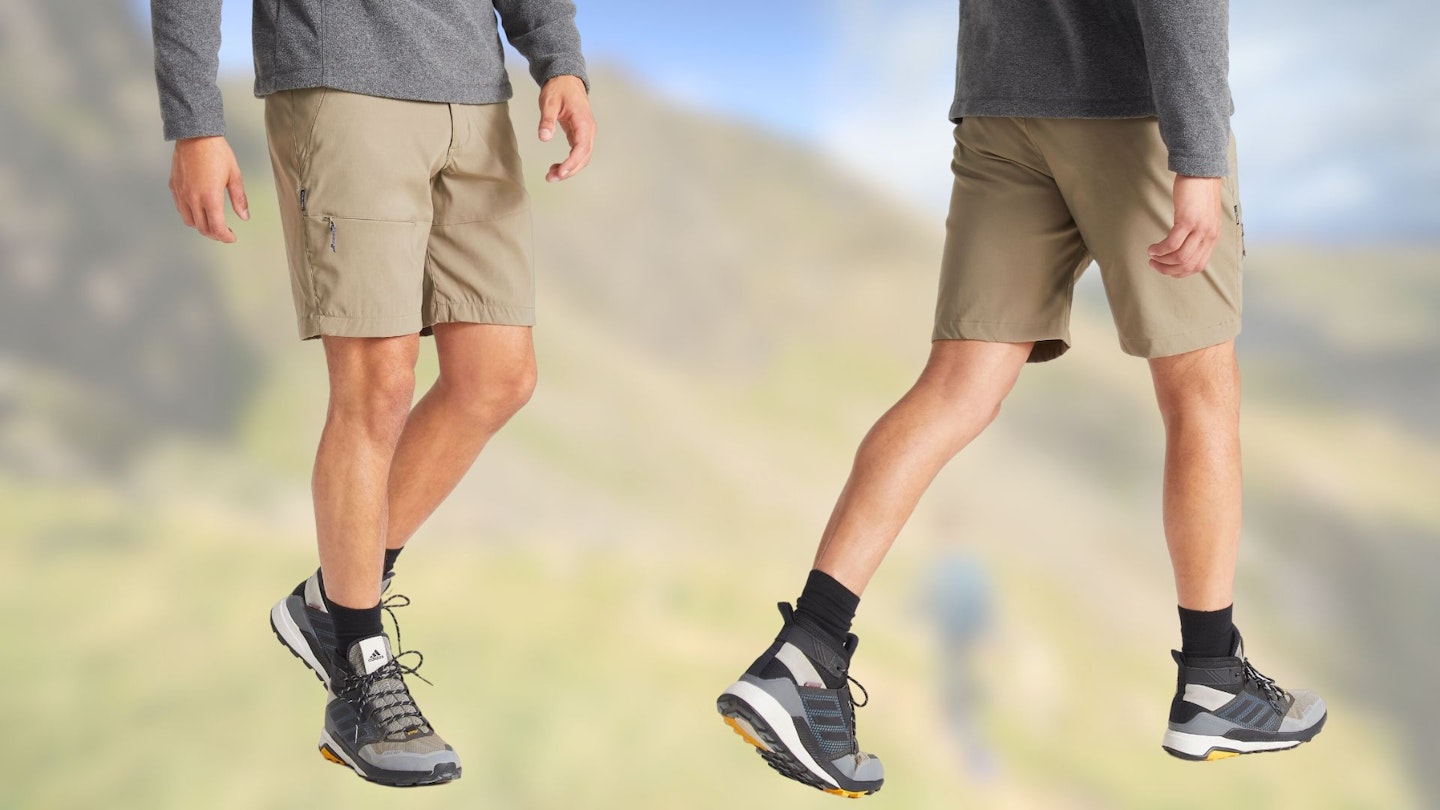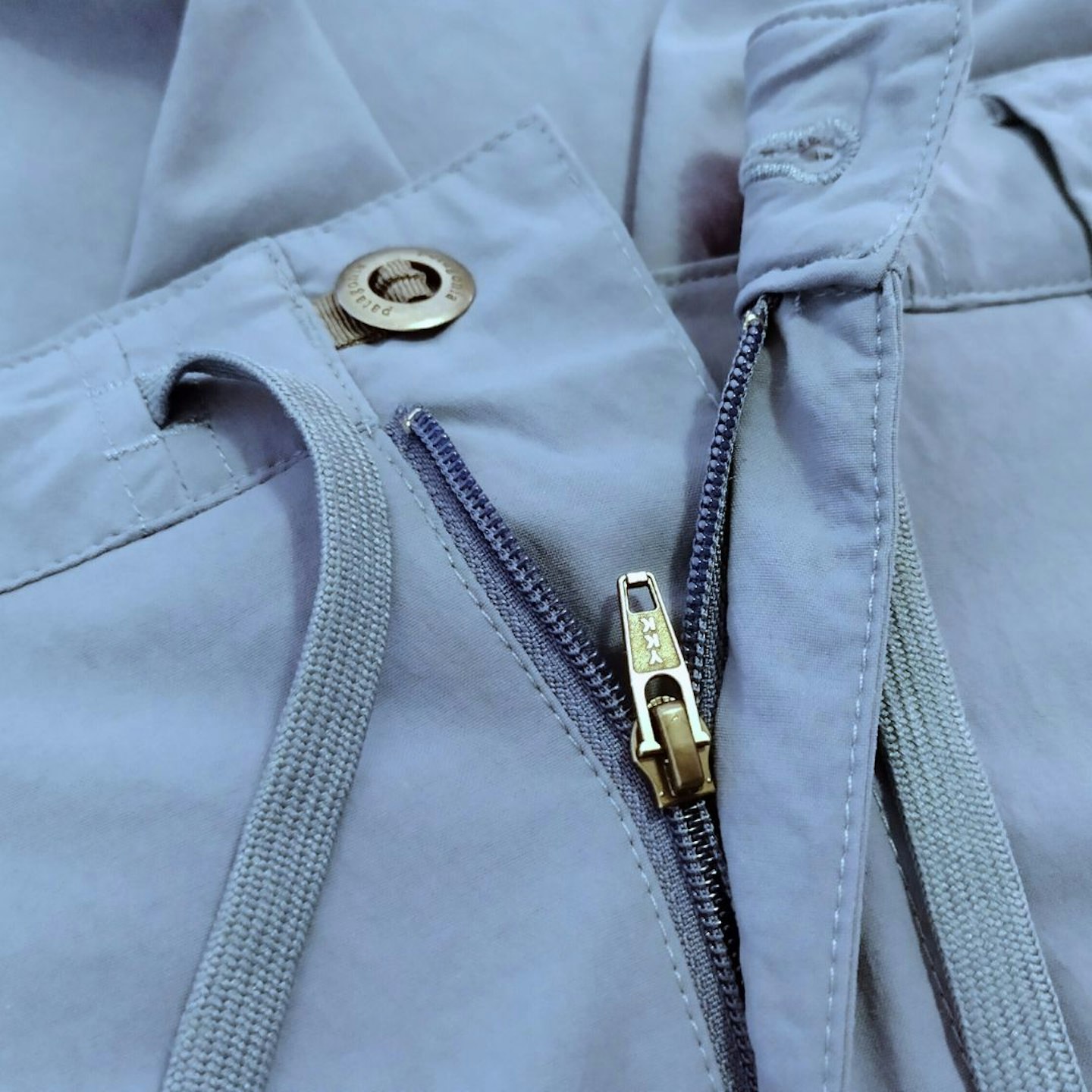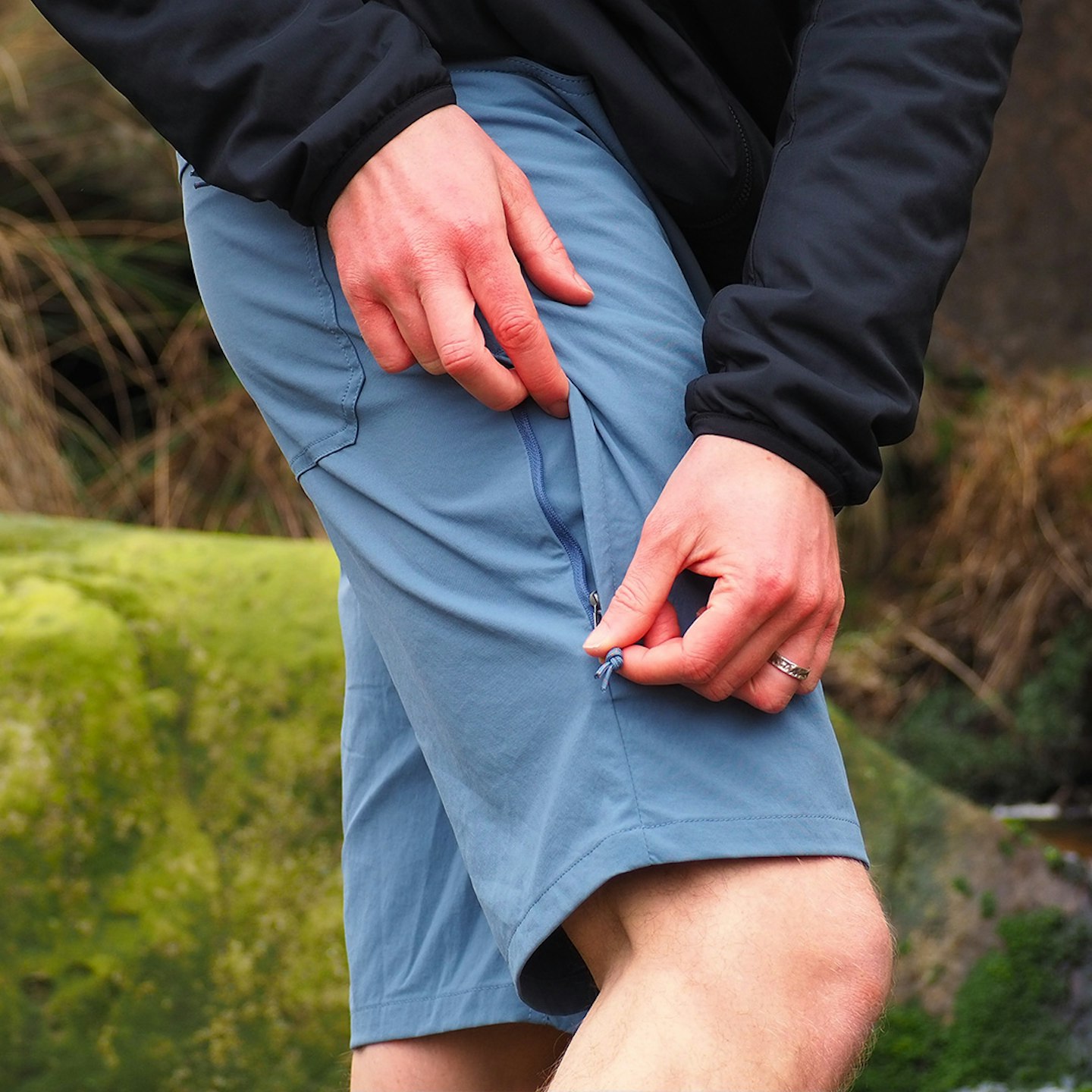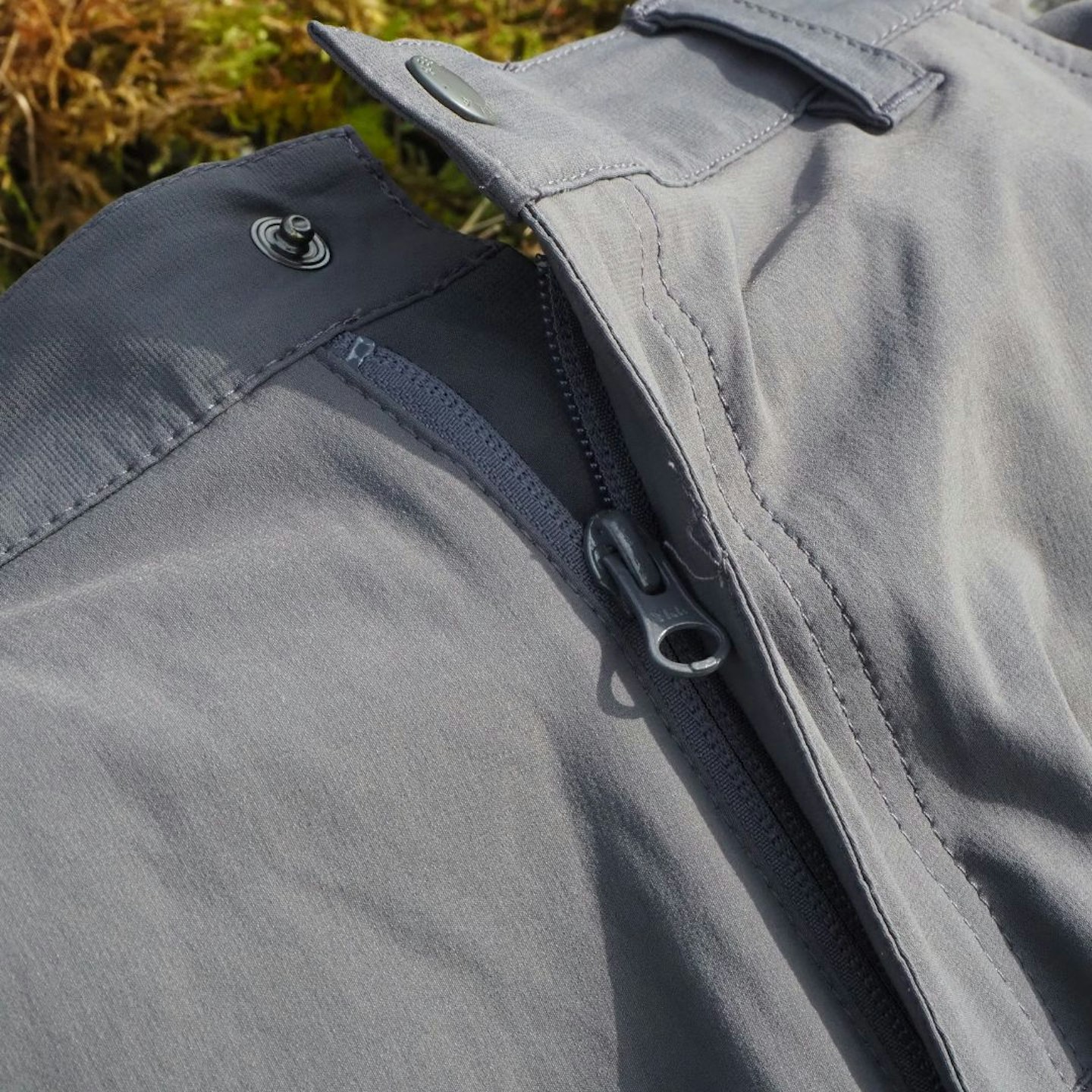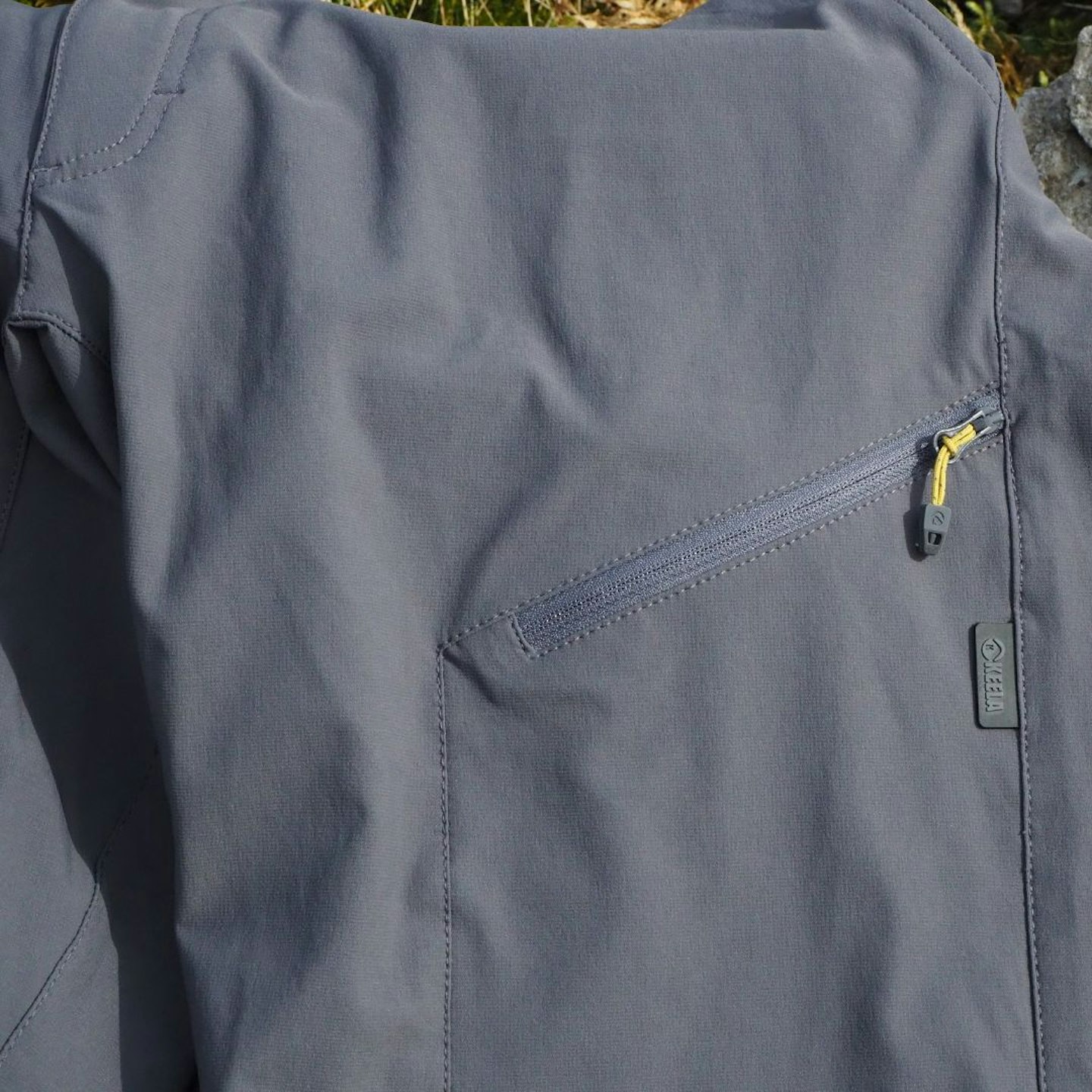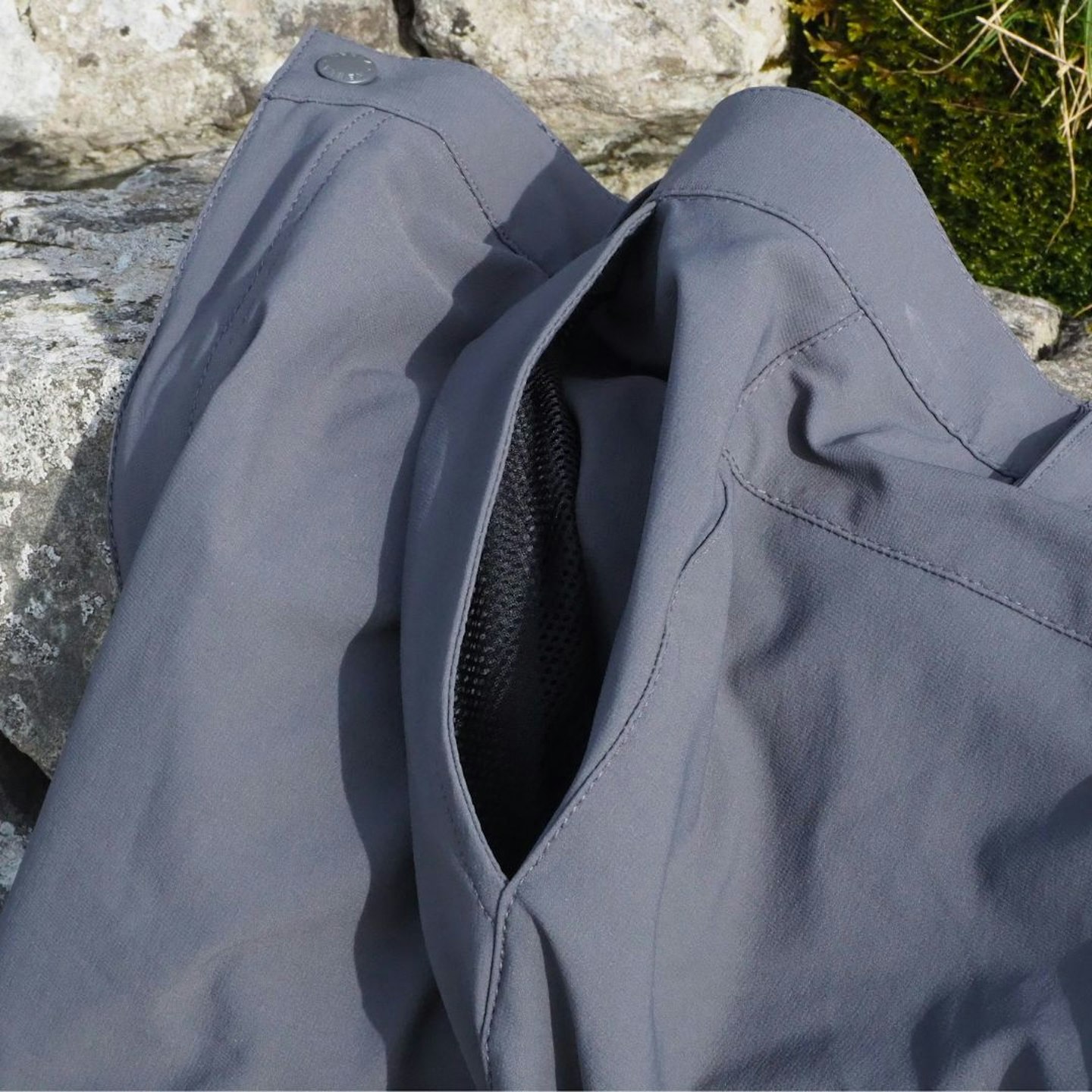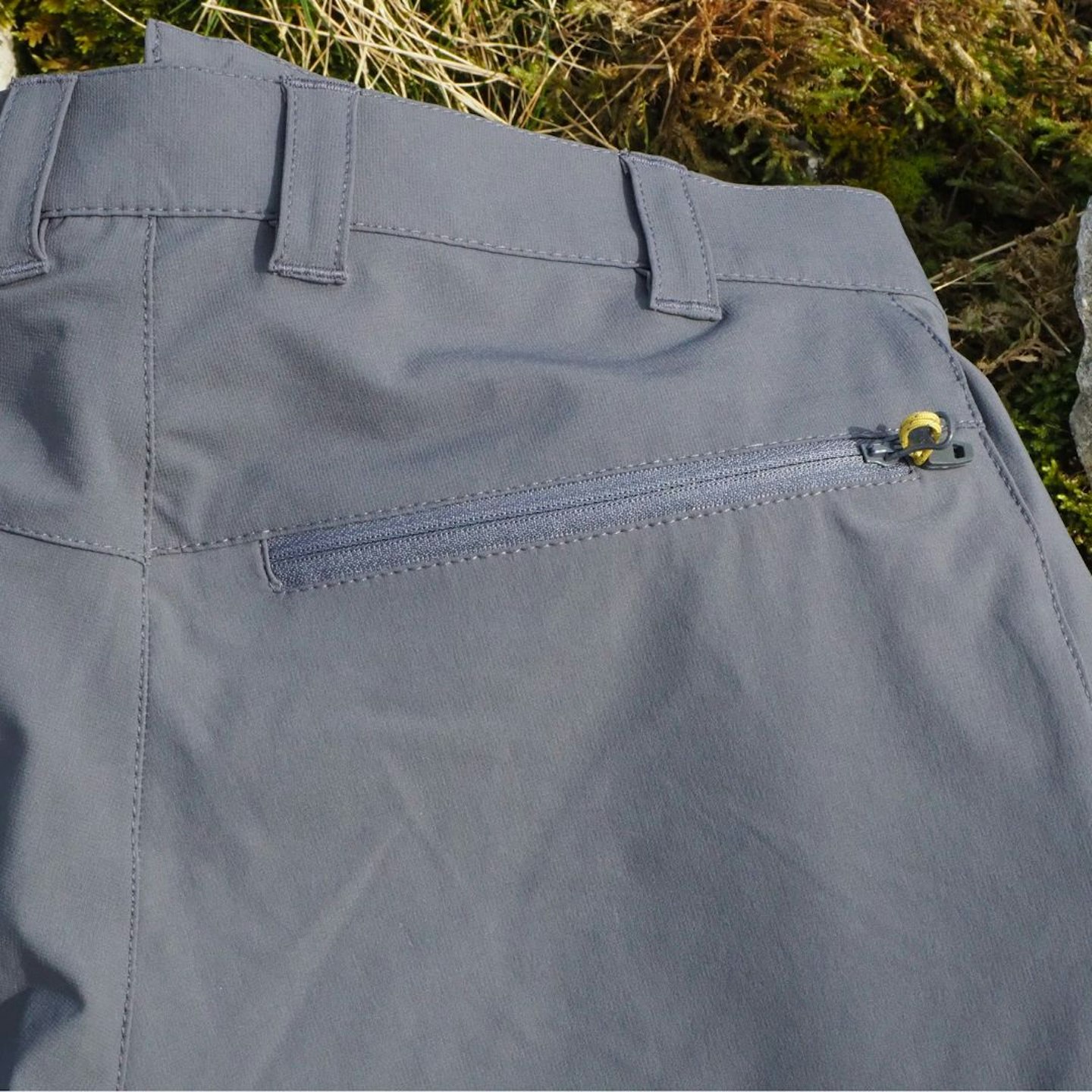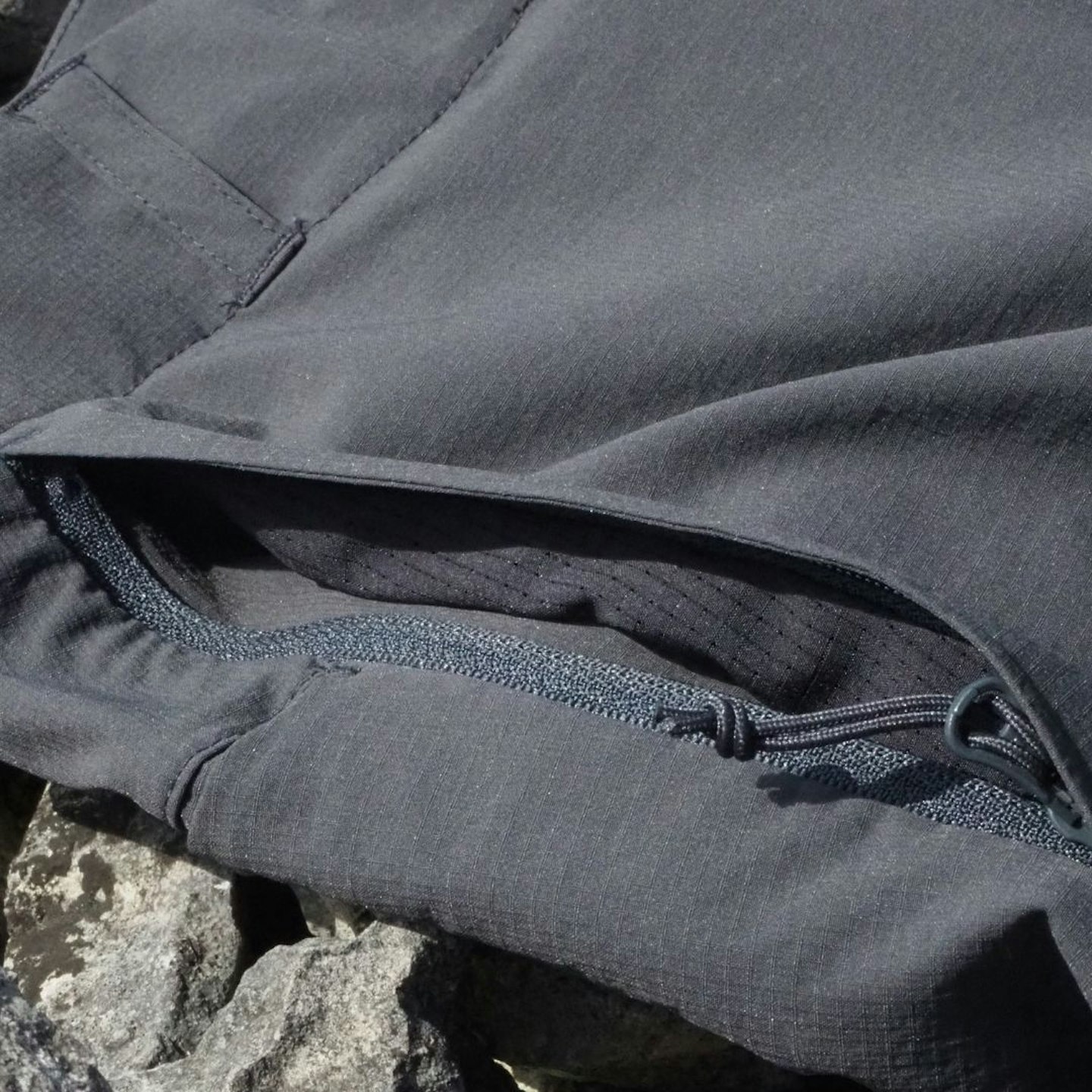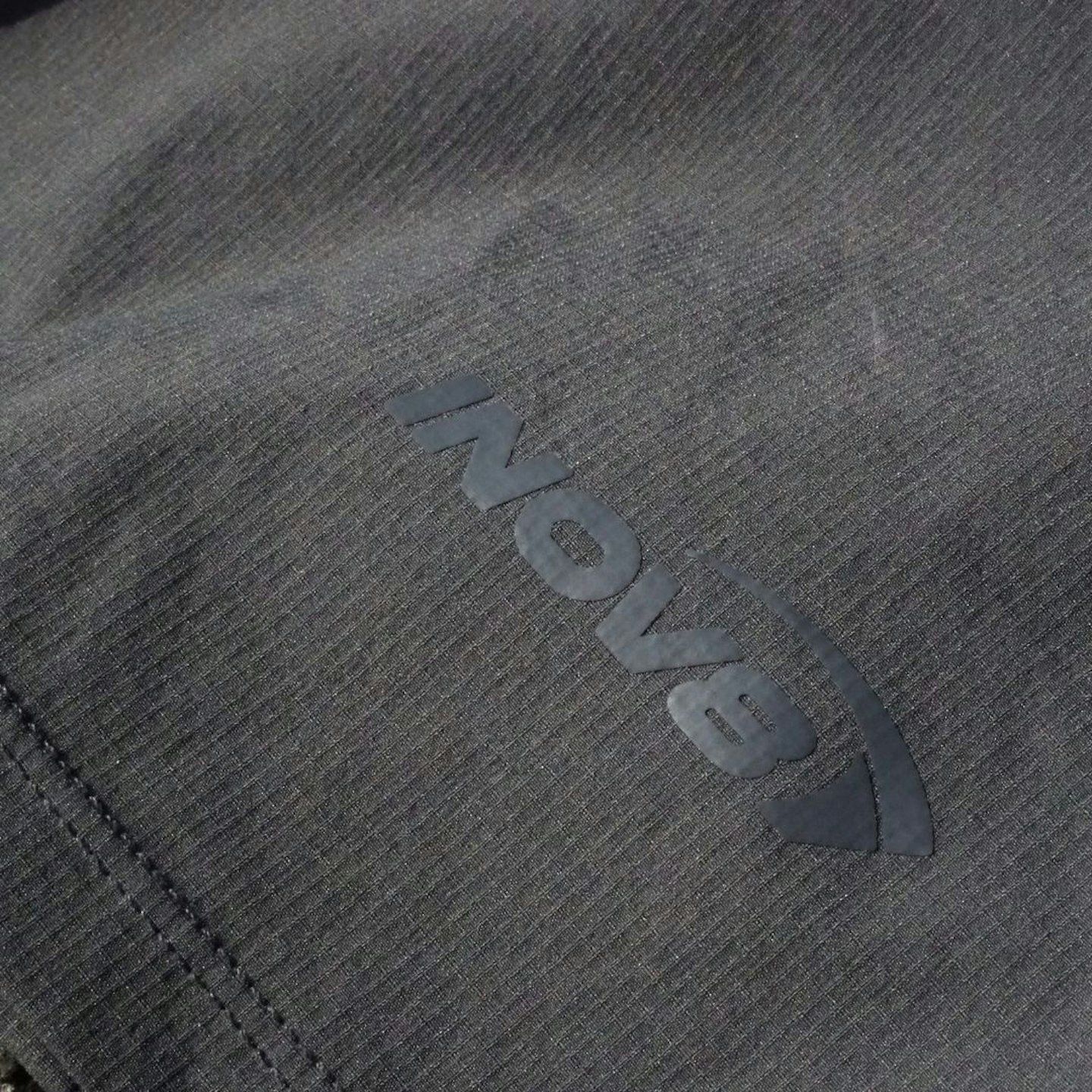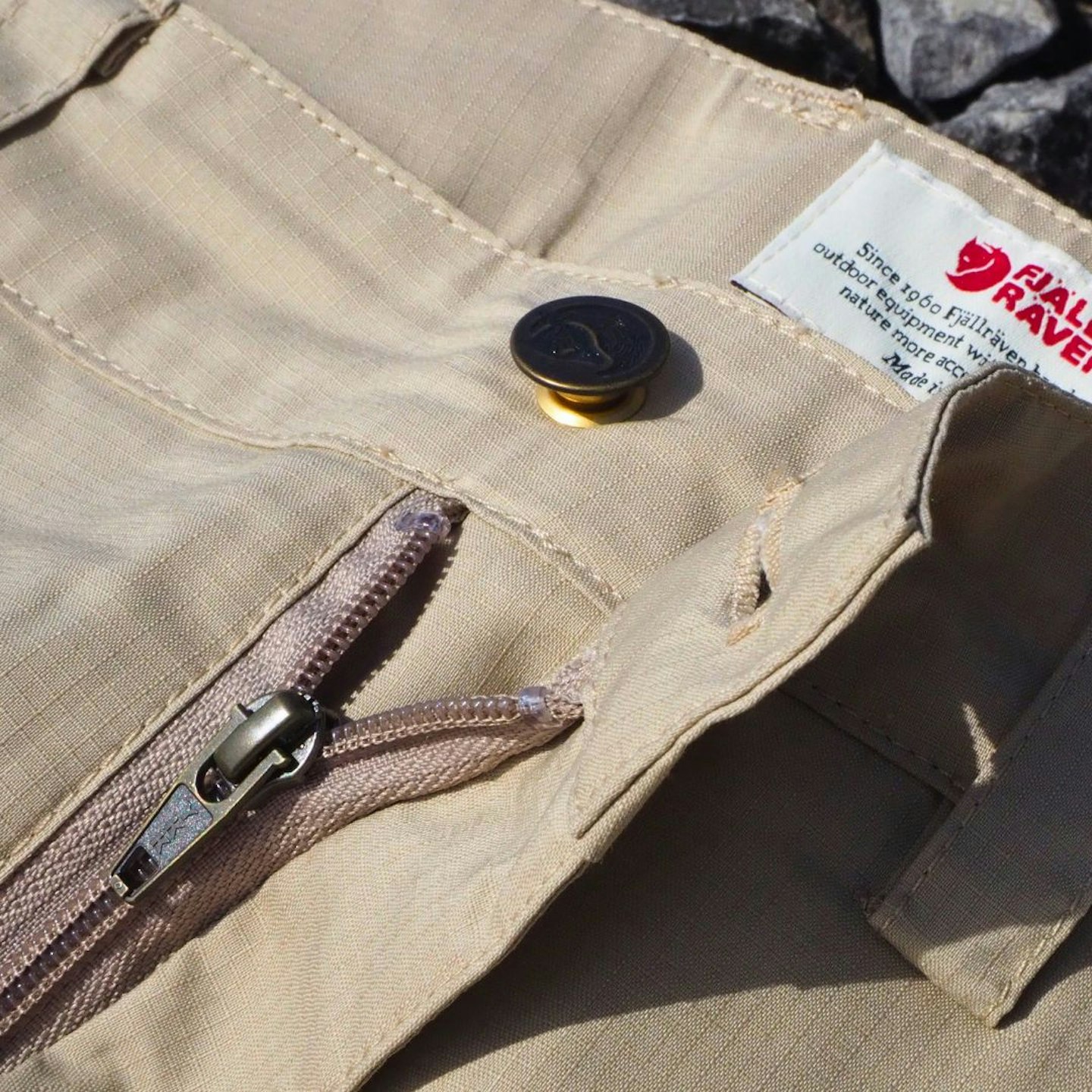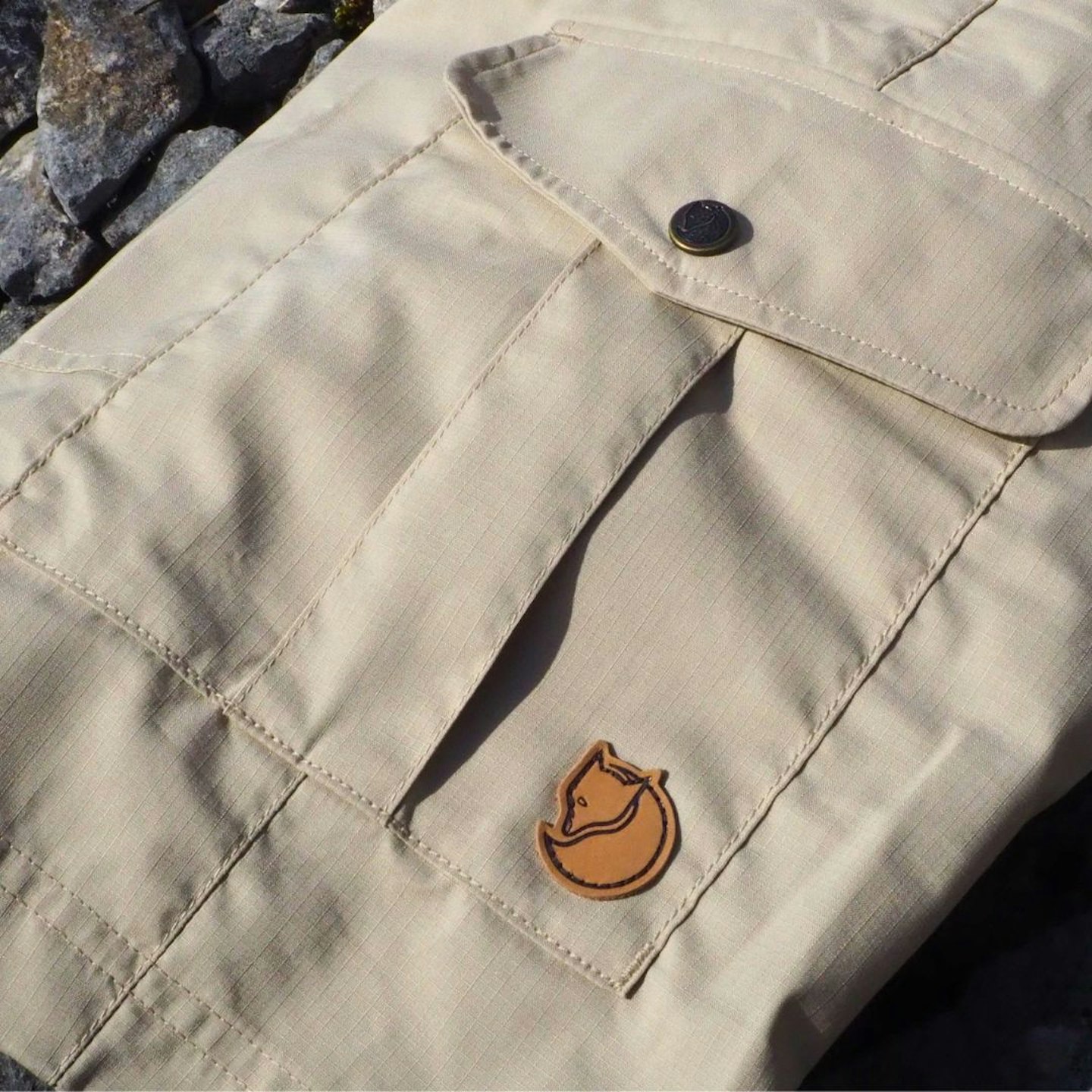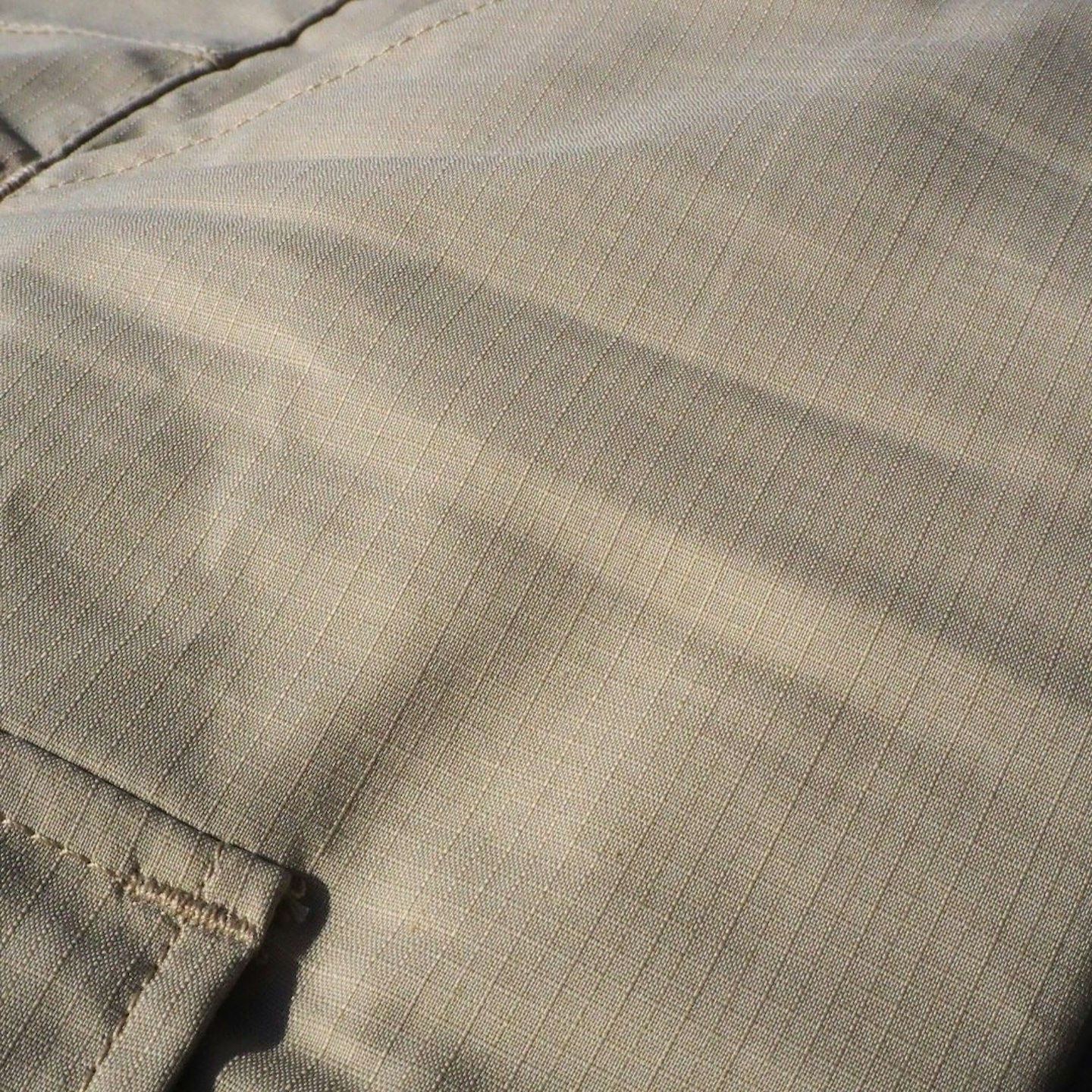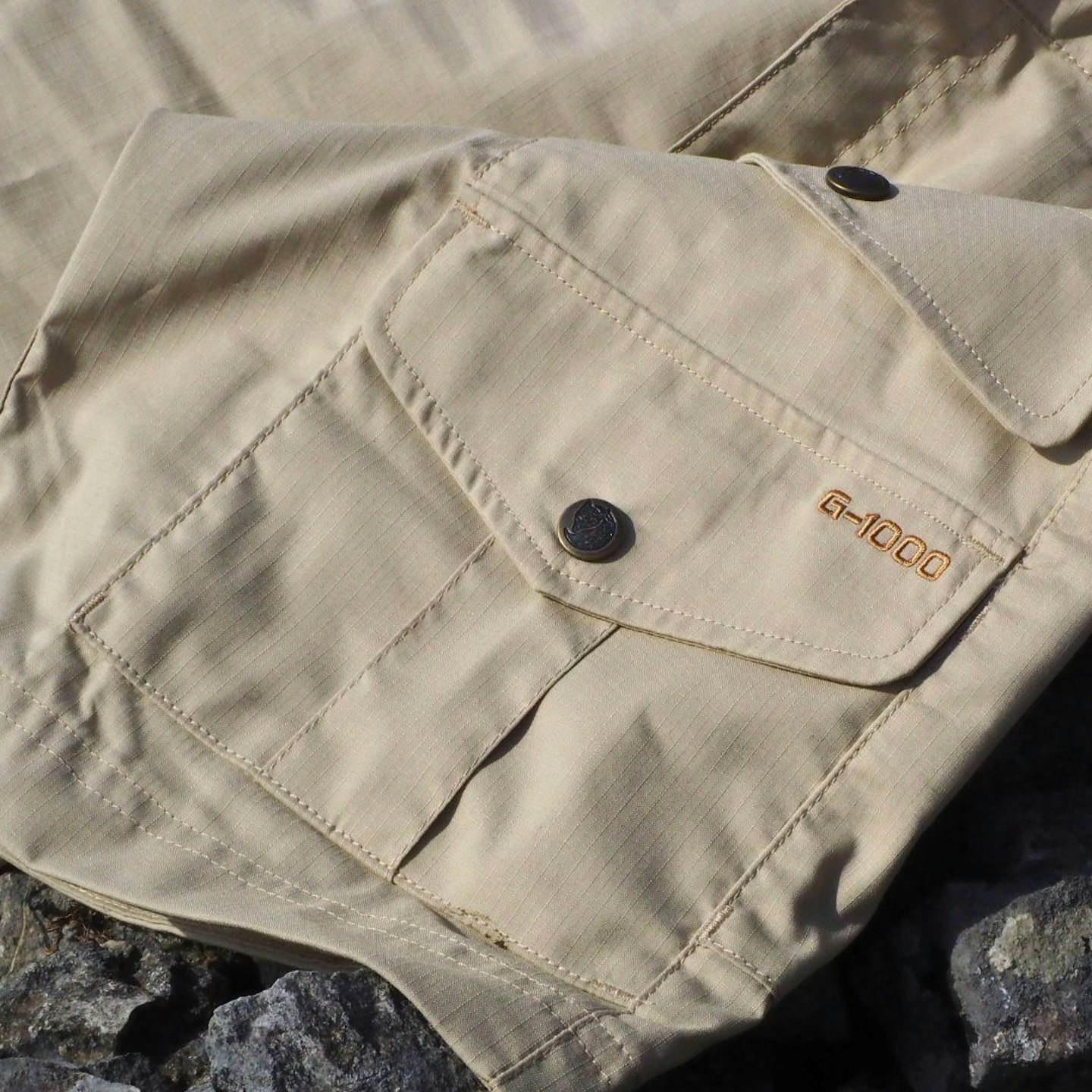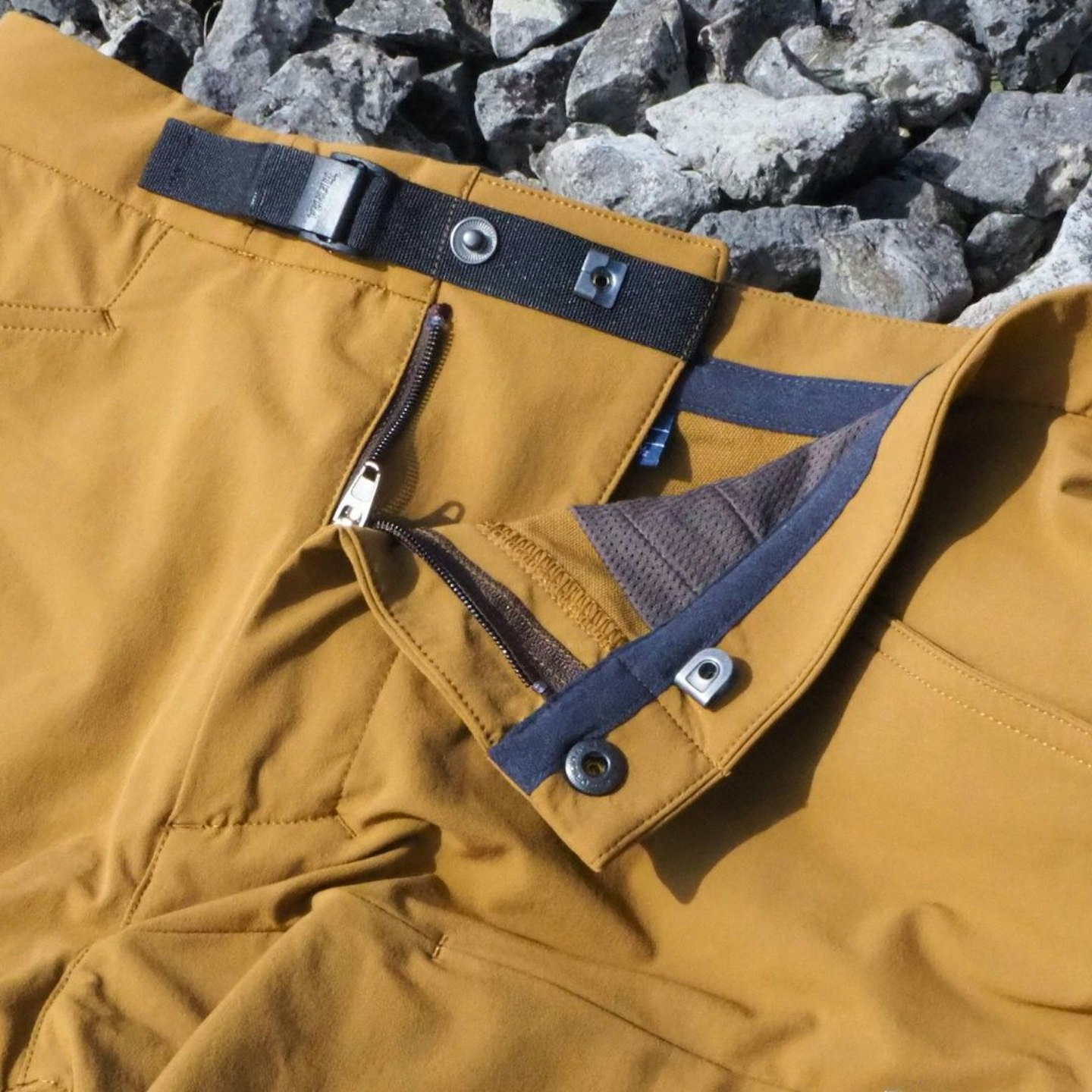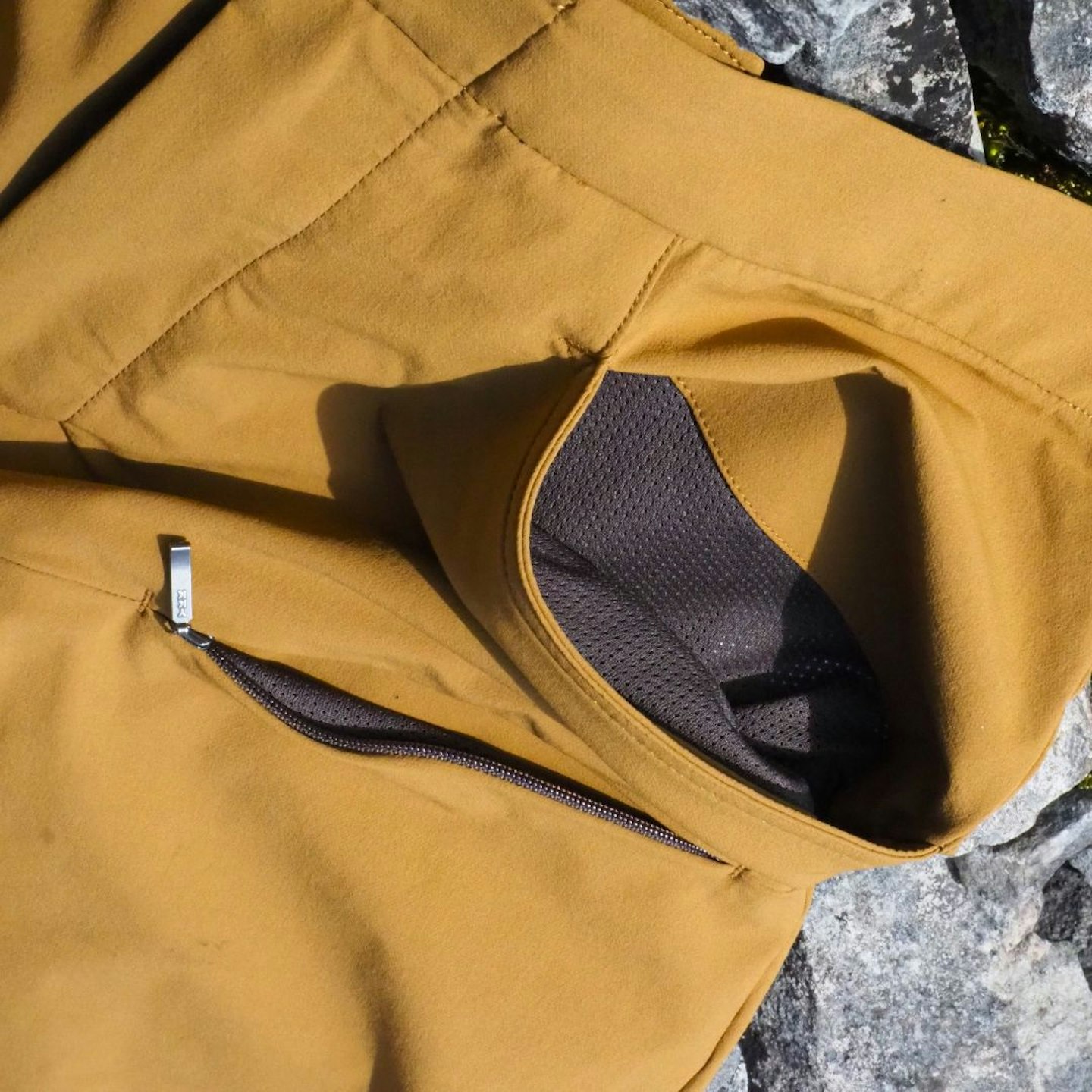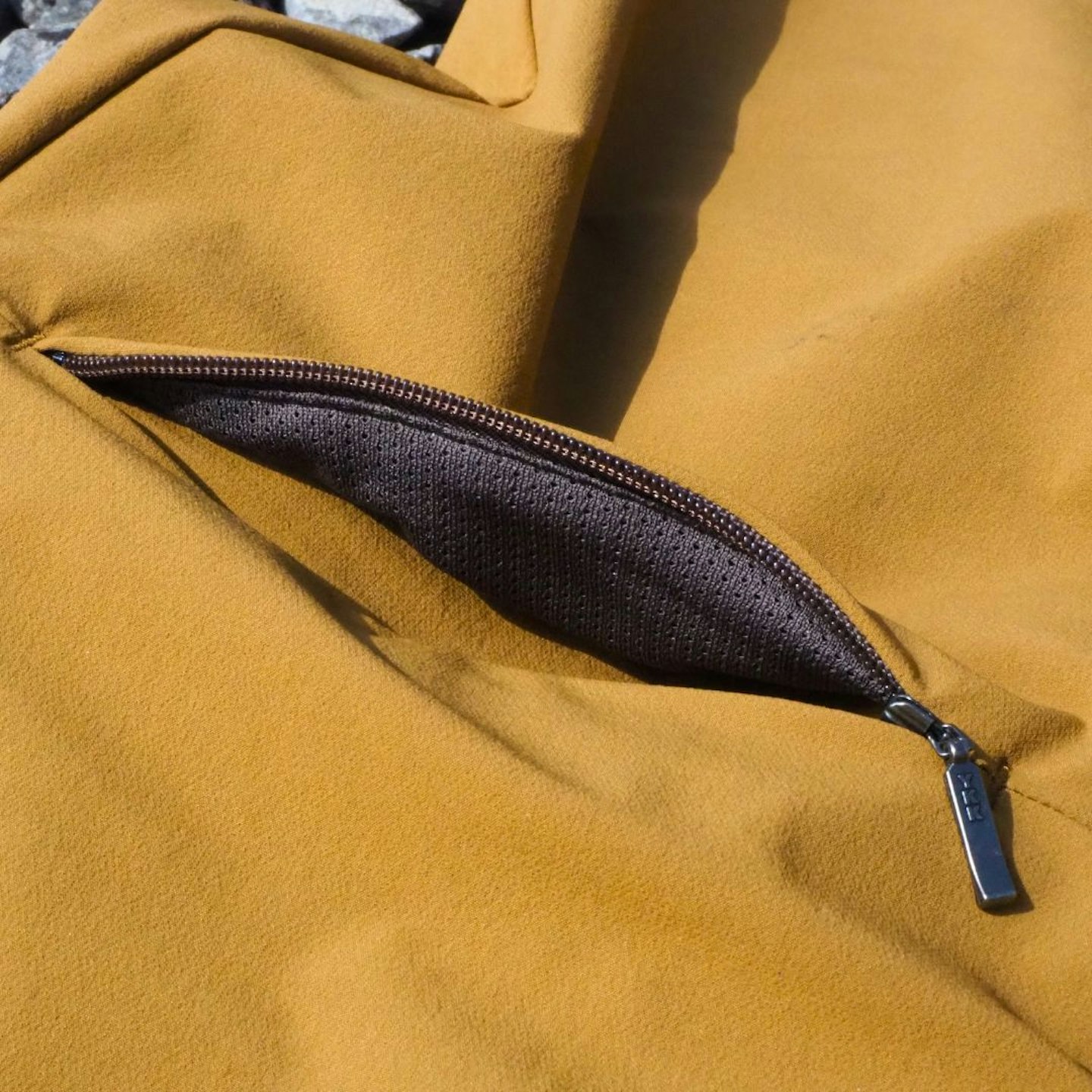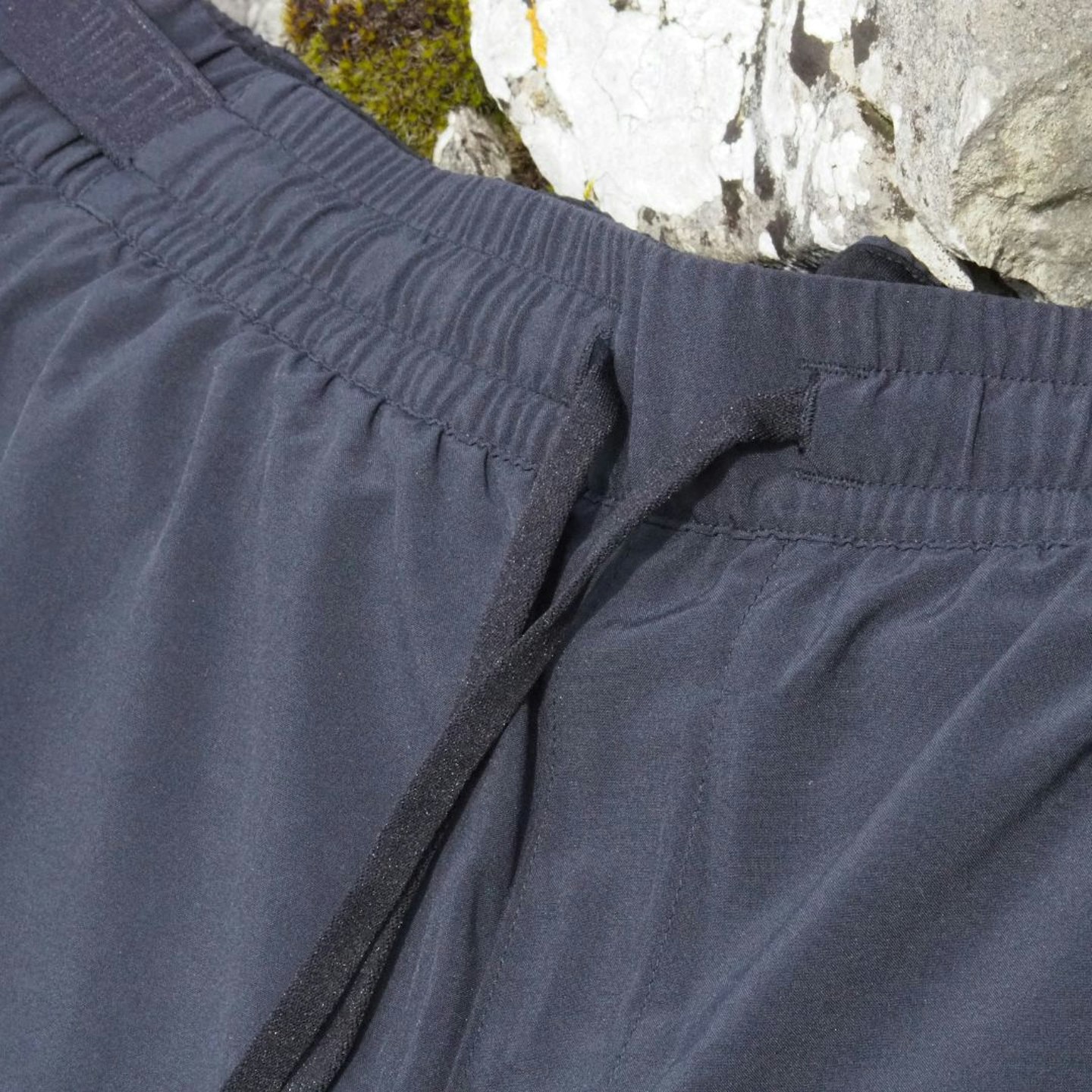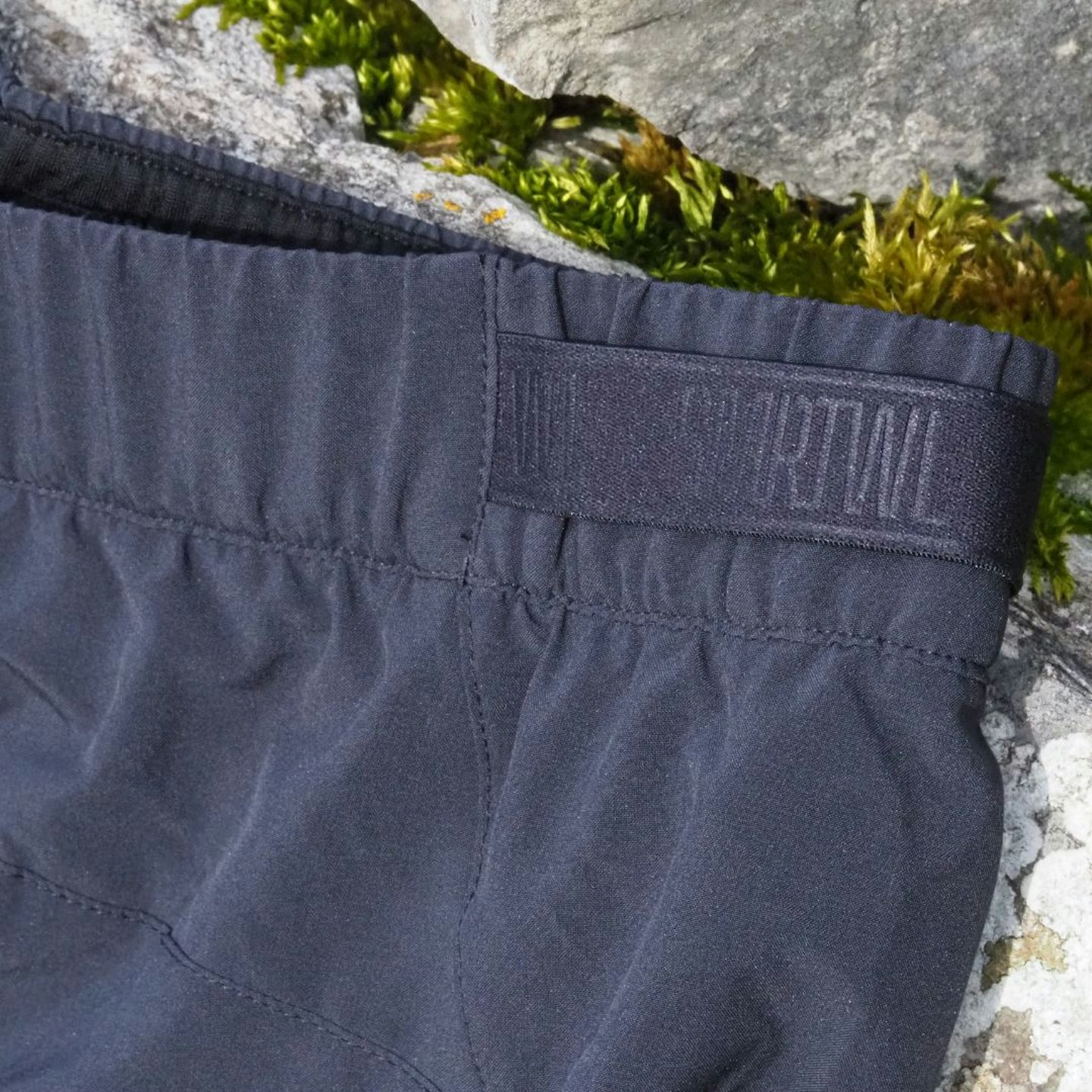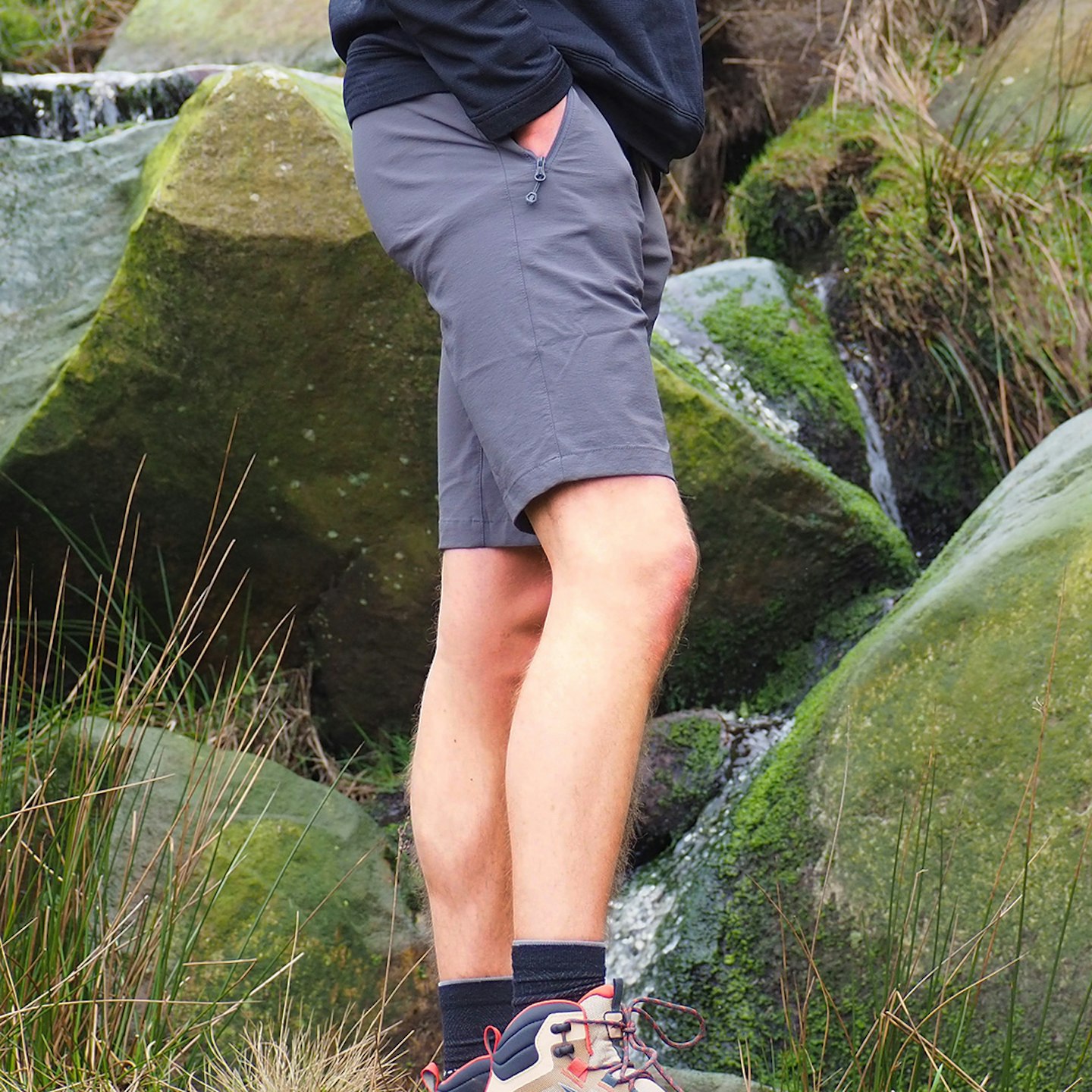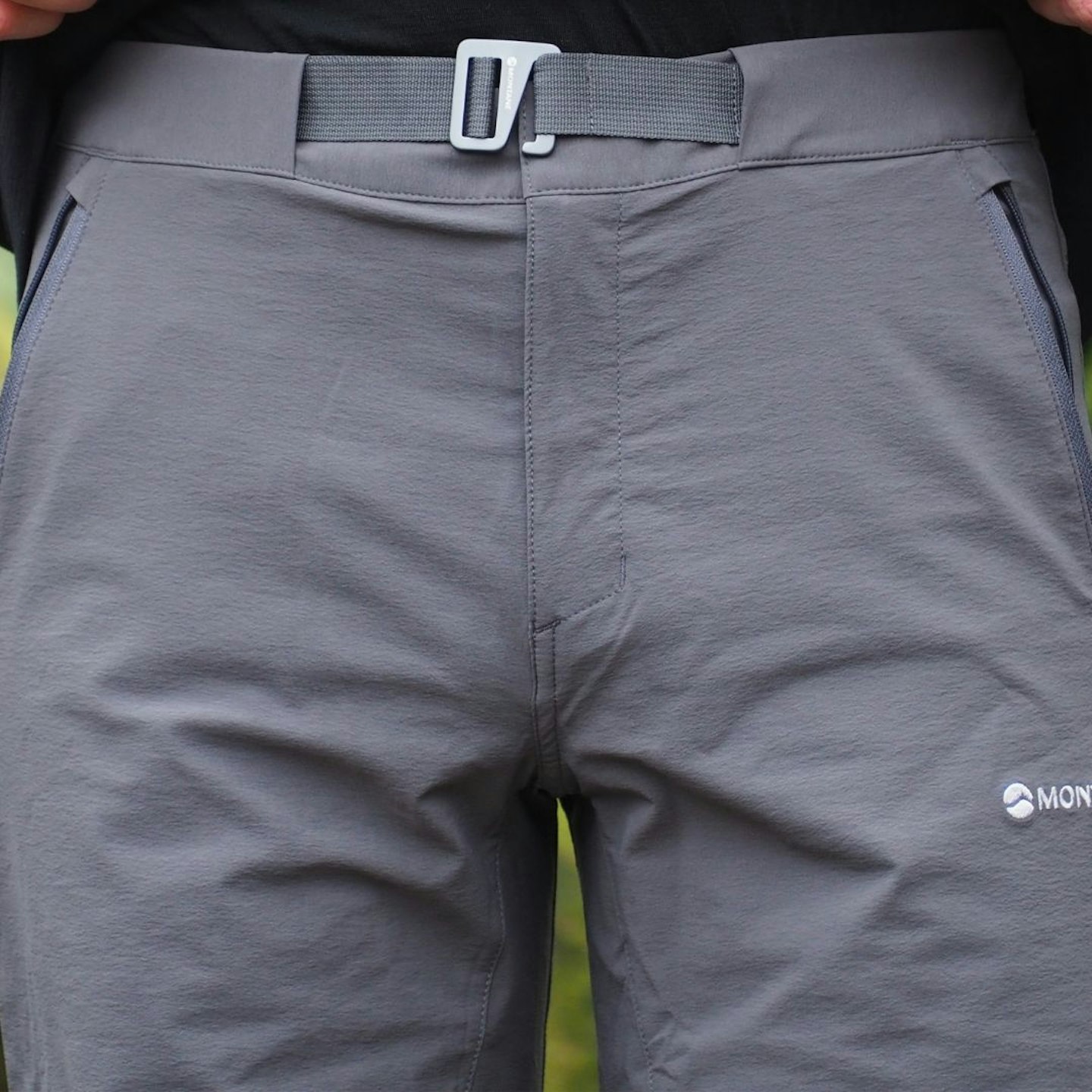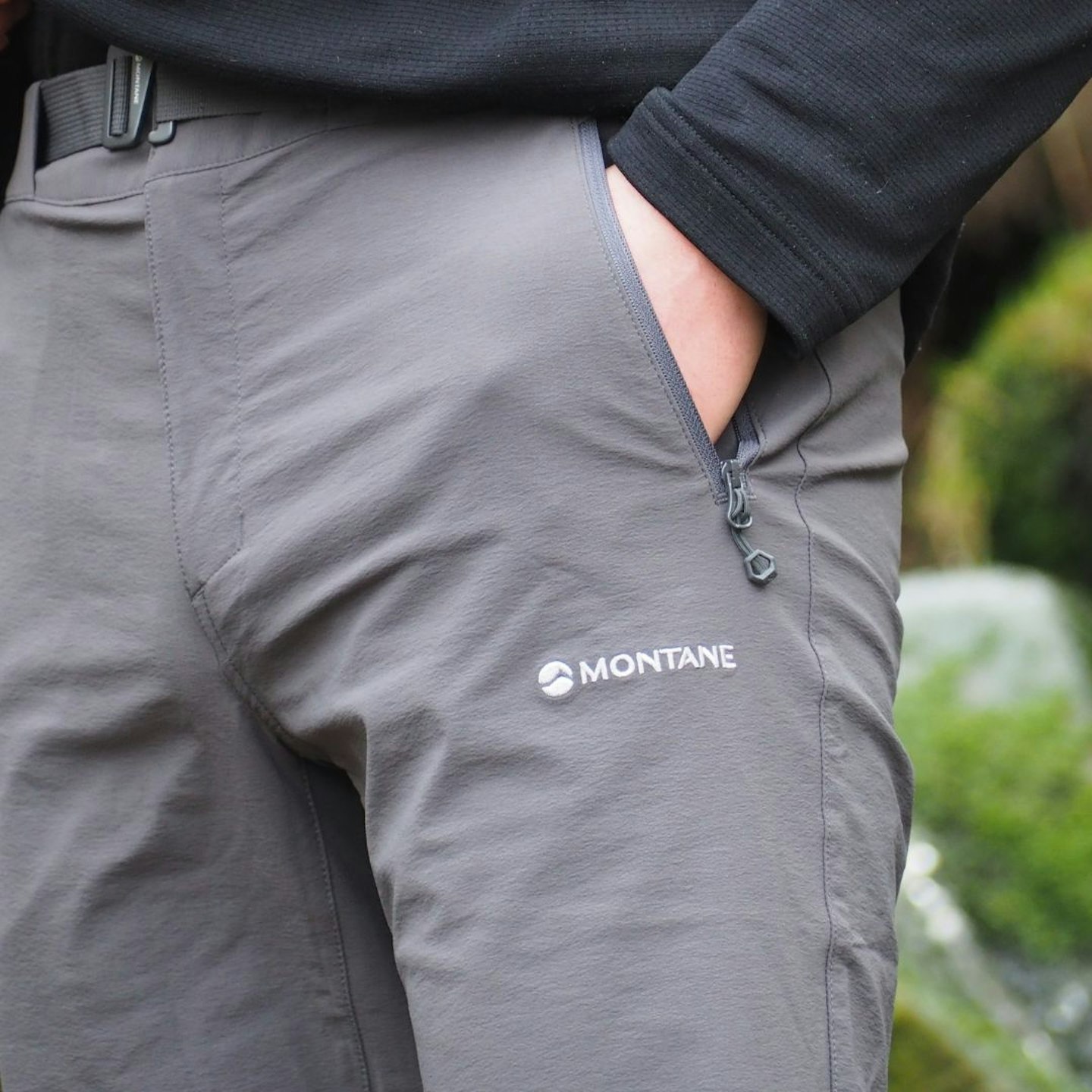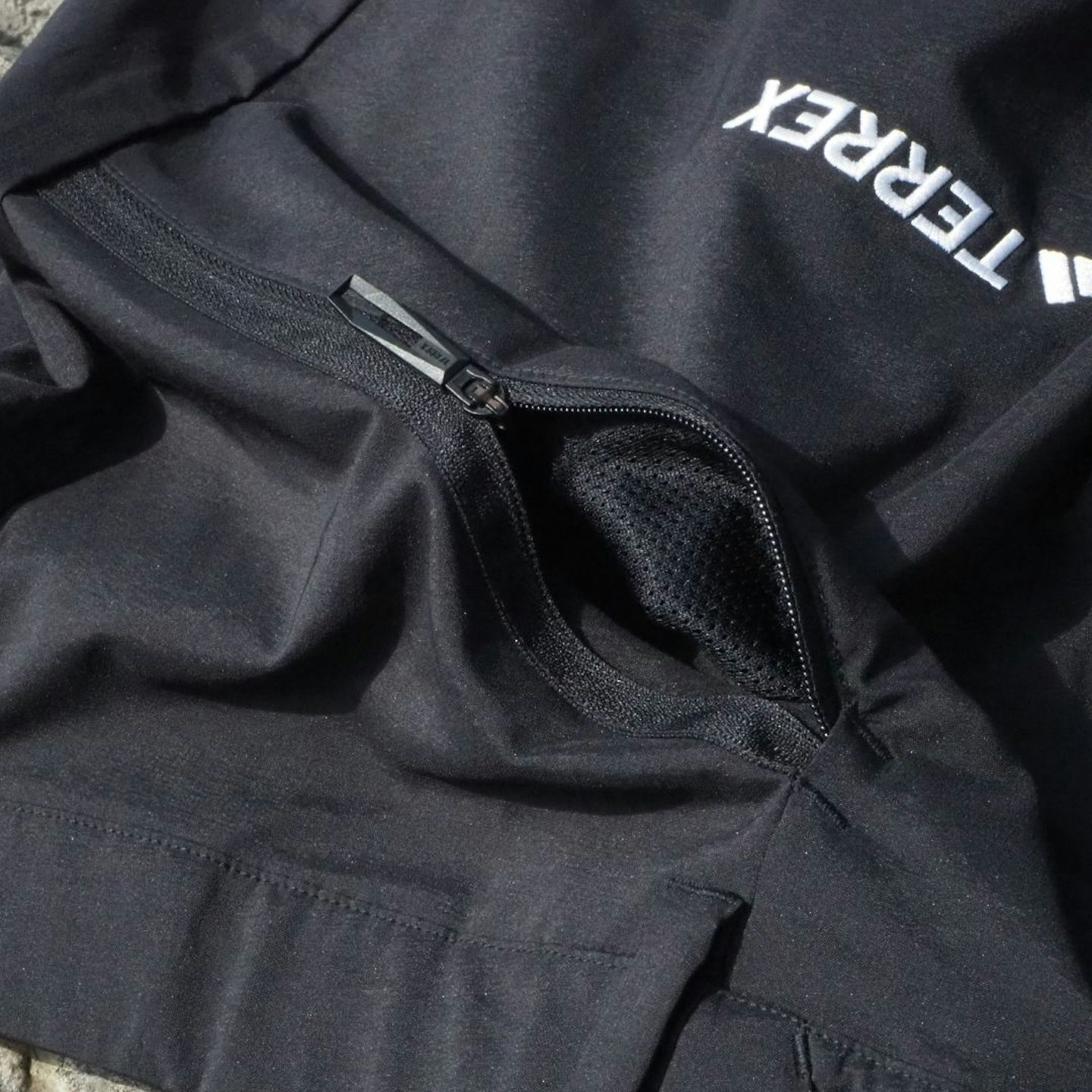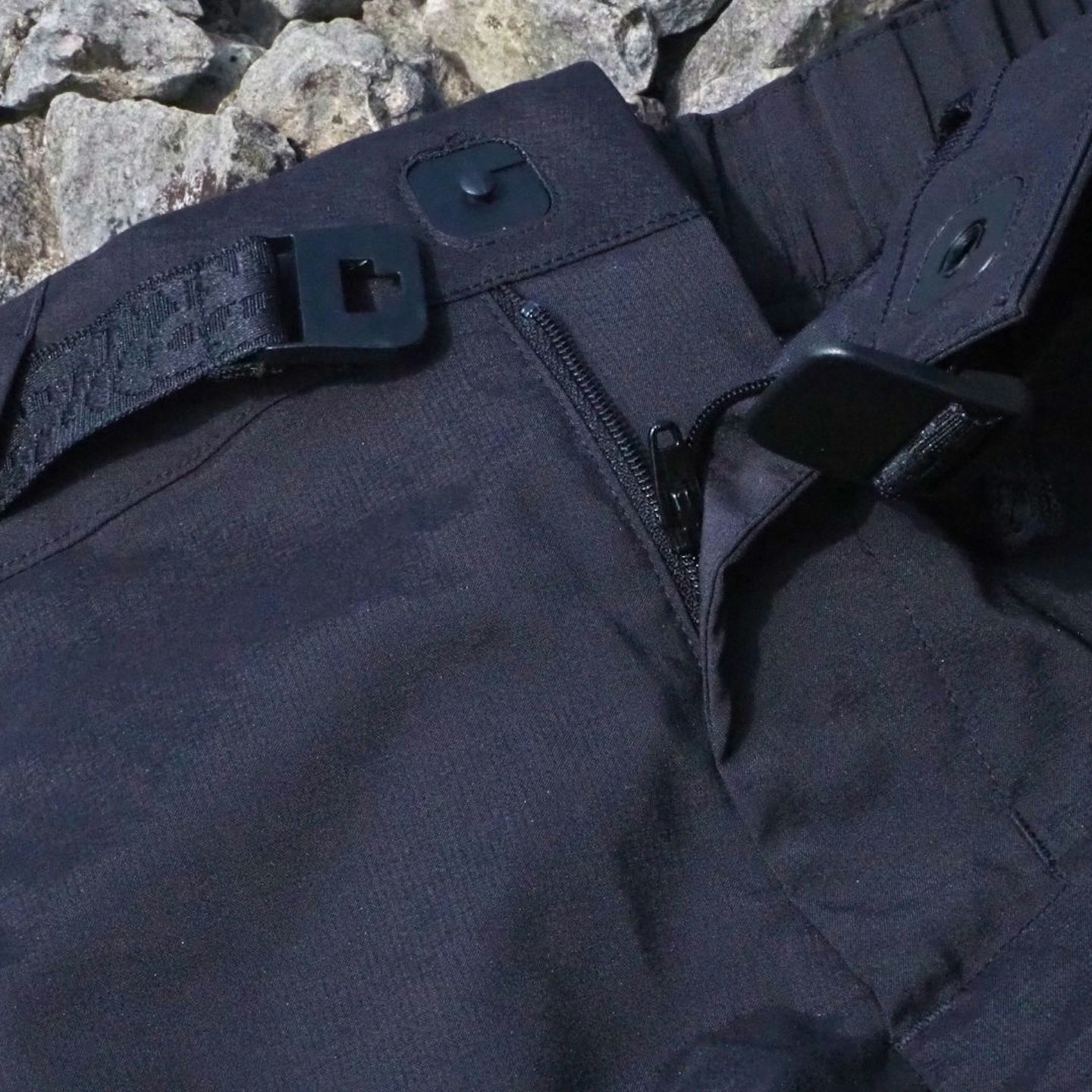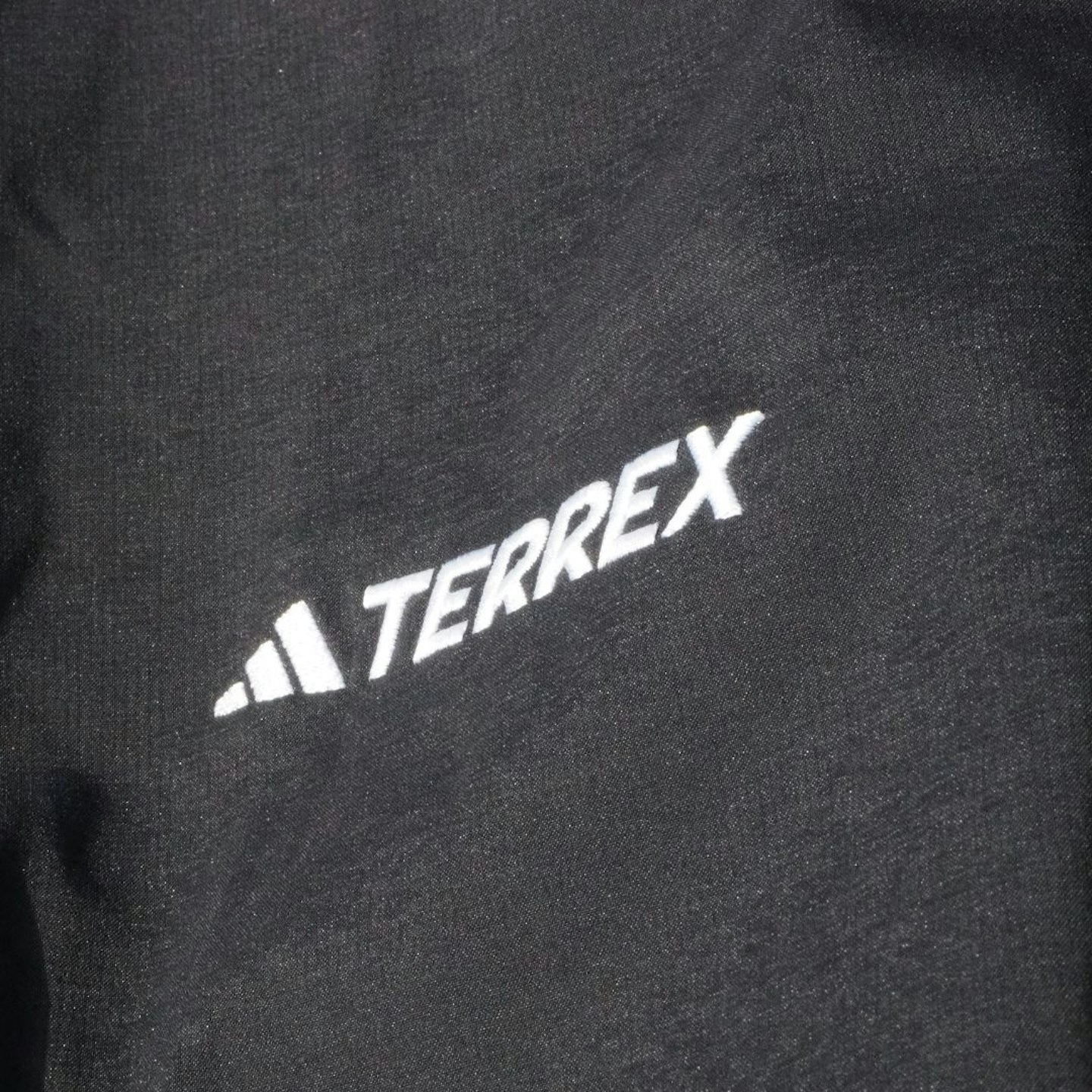When the hills are drenched in golden sunlight, it’s time ditch the walking trousers, free your knees and reach for a pair of comfy hiking shorts.
By and large, most of us prefer to indulge in our wanderlust when the weather is warmer. Hiking from April through to October is very appealing in the northern hemisphere when the wind drops, the sun shines, and the temperature rises.
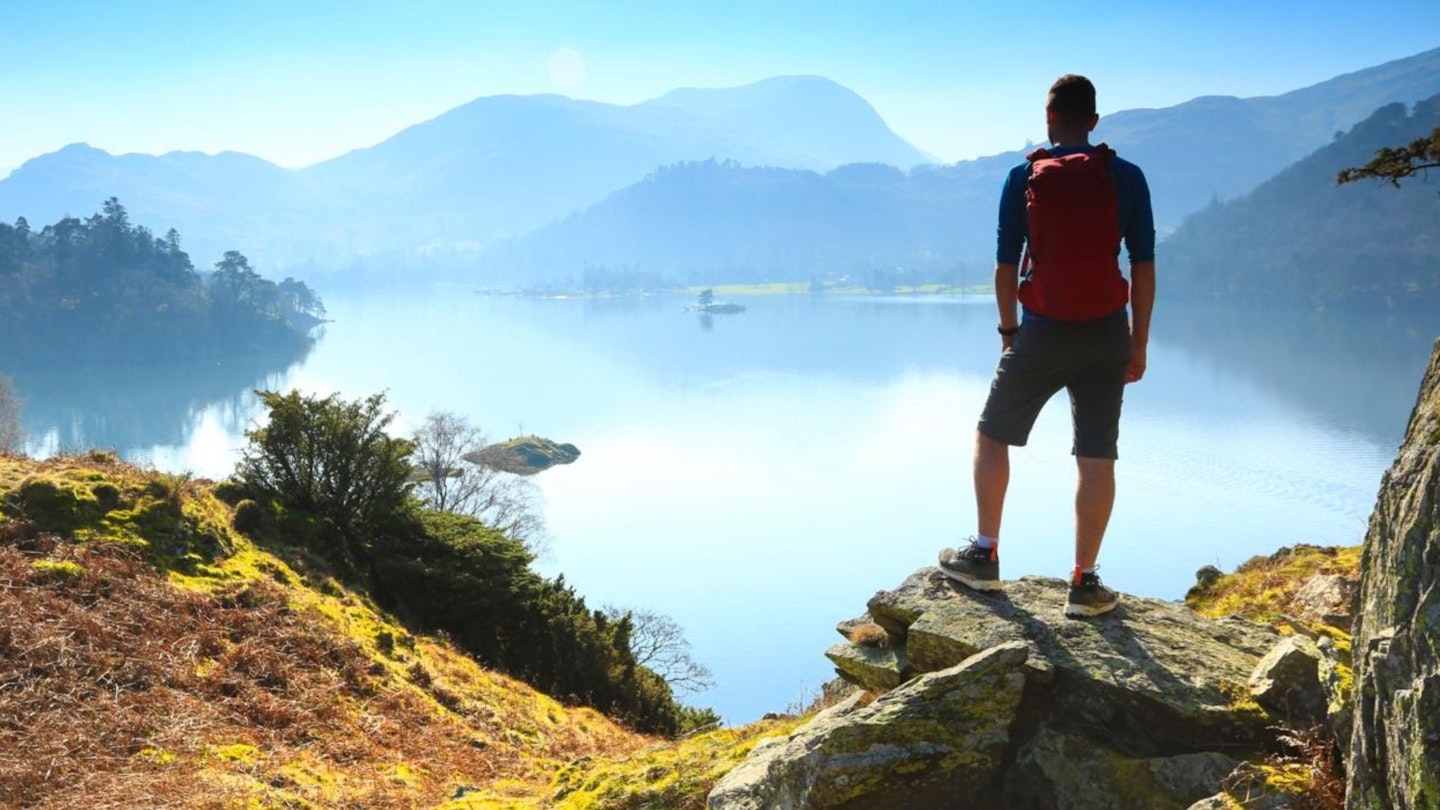
What are the best hiking shorts of 2024?
Best in Test: Patagonia Quandary Hiking Shorts
Best Value: Keela Bidean Shorts
Best lightweight hiking shorts: Inov8 Venturelite 11” Short
Just like their full-length counterparts, walking shorts vary in construction, weight, fit, and price, amongst other factors. Here, you will find our favourite walking shorts that each bear a certain strong point, be it value, lightness, or durability, for example.
The best hiking shorts reviewed:
These shorts tick all the boxes. They are comfortable and stretchy, with first-rate features and good freedom of movement. As you’d expect with eco pioneers Patagonia, the sustainability credentials are top-notch. The fabric features bluesign-approved, recycled nylon made from old fishing nets with 4% elastane for a bit of stretch. There is a DWR treatment as well, which is PFC-free.
The above-the-knee length is pretty standard, with the men’s available in a 10-inch inseam length and the women’s in 5-inch and 7-inch options. The slightly-stretchy waistband has belt loops but there’s a drawcord as well if you need to tighten – although it only makes a small difference. You also get two hand pockets, a right thigh zippered pocket, and two rear pockets (one zippered).
The fabric is lightweight, quick-drying, and allows for flexibility on the move. Patagonia’s curved waistband has been designed to “follow the natural shape of the hips and provide a contoured fit to help keep shorts in place during movement”, and it works well. The fit is true to size, striking a nice balance – neither too loose nor too tight – and these shorts look good too.
Pros
- Sustainable
- Well-made
- Good features and performance
- Look nicer than most hiking shorts
Cons
- Drawcord has limited effectiveness
| Men's sizes | 28 - 40in |
| Women's sizes | 2 - 16, 5in or 7in inseam |
| Weight | 221g |
| Material | 96% bluesign-approved recycled nylon, 5% elastane w/ PFC-free DWR |
Unlike some outright cheap hiking shorts, Keela’s Bidean Shorts offer a high end feel, performance, and quality construction.
The Bidean Shorts have a good pocket arrangement with two standard hand pockets, plus a pair of zipped pockets above the knee. There is a zipped back pocket as well.
We liked the fit, being a regular cut with an 11-inch inseam and a lightweight softshell-type stretch fabric. It looks and feels good and still allows for freedom of movement even when scrambling.
Some of the other shorts here are a tad more breathable, but the Bidean shorts are still versatile. Although, it would be good to see Keela use recycled material.
Pros
- Good comfort and fit
- Versatile
- Well made
Cons
- No recycled material used
| Men's sizes | 30 - 44in |
| Women's sizes | UK 8 - 20 |
| Weight | 240g |
| Material | Stretch-Tec (90% nylon, 10% Spandex) w/ DWR |
When trying to find the best lightweight hiking shorts, we weren’t merely after the absolute lightest pair. We wanted to find something that could still handle the rough and tumble of hiking.
In the Inov8 Venturelite shorts, we have a winner. At 192g these are a similar weight to the Smartwool running shorts (below) but are more focused hiking shorts that are still well made and durable.
The inseam length is 11 inches, which provides plenty of coverage, and like the Keela Bidean Shorts, these have a very good regular fit and a fabric that has a nice amount of stretch. We’ve used the Venturelite shorts for hiking and bouldering and have been really impressed with their comfort and freedom of movement.
The pocket arrangement isn’t as comprehensive as some of our other recommendations, with just two zipped hand pockets and a phone sleeve. But our biggest gripe is that, at the time of writing at least, there is no women’s version.
Pros
- Lightweight yet still durable
- Versatile
- Good range of sizes
Cons
- No women's version
- Not as many pockets as others
| Men's sizes | XS - XL |
| Women's sizes | N/A |
| Weight | 192g |
| Material | 90% recycled nylon, 10% elastane |
These classic cargo shorts are made from 280gsm organic cotton and are supremely comfortable. Being cotton, they're not great when they get wet but if you're hiking in dry weather, they're tremendous.
There are myriad pockets, most of which have a button closure. They're fine but for using one-handed, a dome is better. Nevertheless, you're spoilt for choice about where to put small items.
We like that these shorts come in subtle, earthy colours and that they are great value, yet durable and sustainable. BAM says these shorts are part of its circular range, meaning that when they're worn out you can send them back to BAM who will recycle it (it's certified recyclable by the Circular Textiles Foundation).
It's just a pity there is no exact women's version.
Pros
- Great value
- Durable
- Superb comfort
- Sustainable
Cons
- No women's version
- Slow drying
| Men's sizes | 30 - 38 |
| Women's sizes | N/A |
| Weight | 400g |
| Material | 98% 280gsm organic cotton, 2% elastane |
Fjallraven’s Vidda Pro Lite Shorts are a bit deceptive. They appear to be heavy cotton cargo shorts but are in fact a lot lighter than they look.
They’re made from Fjallraven’s G-1000 Air Stretch material, which is a blend of polyester (65%) and cotton (35%). The idea is to get the classic trekking shorts look without the bulk and Fjallraven has certainly succeeded there.
We liked that, although the Vidda Pro Lite Shorts have a lightweight focus, Fjallraven hasn’t let durability suffer. The zip and domes are all metal, and there is a double layer of fabric over the backside.
The pocket arrangement is excellent, with big, open hand pockets, plus four buttoned leg pockets of various sizes for all sorts of kit.
As is customary of Fjallraven, the price is high. In fairness, however, these felt like the most durable shorts on test. They’re also PFC-free and use mostly recycled polyester and organic cotton. You can even give them a treatment of Greeland Wax for added wind and water resistance.
Pros
- Lighter than they look
- Loads of pockets
- Plenty of colour options
- Durable
Cons
- No direct women's version
- Quite pricey compared to rivals
| Men's sizes | 29 - 44in |
| Women's sizes | N/A (Women's Nikka Shorts size UK 6 - 20) |
| Weight | 287g |
| Material | G-1000 Air Stretch (52% recycled polyester, 13% polyester, 35% organic cotton) |
Like the Keela Bidean Shorts, these Tarfala Shorts from Swedish brand Tierra are no-nonsense, quality hiking shorts.
They’re made from a slightly stretchy, lightweight, partially recycled, softshell material with a PFC-free DWR. All four pockets (two hand pockets and two zipped front security pockets) are quite generous and are mesh lined for better ventilation in hot weather.
These shorts also feature a serious fastening system. They have a fly, hook, dome closure, and belt. Whatever you’re doing, these shorts aren’t slipping off your hips.
For casual hikes and more demanding mountain treks alike, these are a great option.
Pros
- Durable main fabric
- Good pocket arrangement
- Very secure fastening
Cons
- Belt material seems a bit thin
| Men's sizes | EU 44 - 56 |
| Women's sizes | EU 32 - 48 |
| Weight | 249g |
| Material | 88% partly recycled nylon, 12% elastane w/ PFC-free DWR |
Fastpacking is becoming increasingly popular, and for good reason. If you’re keen on this swift, ultralight, minimalist approach, these shorts may appeal. They certainly did to us.
What we liked about these Smartwool shorts is their simplicity and comfort. There is just one small rear zipped pocket – so you can't inadvertently load pockets full of stuff, which inhibits movement and comfort. And the inner brief is a merino/Tencel Lyocell blend, which is moisture-wicking, temperature regulating, and naturally anti-odour.
The outer fabric is recycled polyester with a generous 14% blend of elastane for loads of stretch. The waistband is a simple elastic design with a drawcord. With a 5-inch inseam on the men's version and 4-inch inseam on the women's, these shorts probably won’t be to everyone’s taste but for moving fast and light, we think they’re excellent.
Pros
- Lightweight and breathable
- Comfortable lining
- Appealing in their simplicity
Cons
- Other options here will have more general appeal
| Men's sizes | S - 2XL |
| Women's sizes | XS - XL |
| Weight | 192g |
| Material | 86% recycled polyester, 14% elastane outer w/ 53% merino, 47% Lyocell lining |
If you prefer hiking shorts with a slimmer fit, the Dynamic Lite Shorts give you exactly that, with all the stretch and durability you’d expect of a pair of shorts costing as much as this.
The Dynamite Lite Shorts are made from an intense-sounding Raptor Flex fabric, which is 88% nylon and 12% elastane, for generous four-way stretch. It’s quite a durable fabric (we liked the reassuringly heavy duty belt and clasp as well) – evident in these shorts weighing 240g, which is 60g more than Montane’s popular Terra Lite Shorts.
There are three pockets: two zipped hand pockets plus a surprisingly large rear zipped security pocket.
The nylon isn’t recycled unfortunately, but the water repellent treatment is at least PFC-free. Annoyingly, there is no women’s version of the Dynamic Lite. The closest would be the Montane Women's Terra Stretch Lite Shorts, which use the same Raptor Flex fabric.
Pros
- Tough, stretchy fabric
- Versatile
Cons
- Too slim for some
- No direct women's version
| Men's sizes | 30 - 38in |
| Women's sizes | N/A (Women's Terra Stretch Lite UK 8 - 18) |
| Weight | 240g |
| Material | Raptor Flex (88% nylon, 12% elastane) w/ PFC-free DWR |
First and foremost, these shorts are available in other (darker) colours. While a good heat reflector, this light grey wasn't personally to our taste and was even a little see through.
But what we liked about these Jack Wolfskin shorts is their comfort and breathability. They are just 120g and really do feel weightless to wear and are very breathable, which is ideal for those hot summer days. The other benefit of being so lightweight and packable is that they become a welcome addition to a hiker's restricted backpacking wardrobe. They barely take up any pack space and are very quick drying.
The nylon construction has a lot of stretch, so while they have a slimmer fit, they aren't restrictive. There is a women's version, but it's a skort rather than shorts. There are two mesh-lined, zipped hand pockets and the wasitband is elasticated with a drawcord.
Pros
- Extremely breathable and lightweight
- Durable for lightweight shorts
- Excellent comfort
Cons
- A bit over priced for quite basic shorts
- Grey colour is a little see-through
| Men's sizes | S - 2XL |
| Women's sizes | XS - XL |
| Weight | 120g |
| Material | TEXACHILL PLAIN WEAVE STRETCH (86% nylon, 14% elastane) |
As a pair of dependable all-round hiking shorts the Terrex Xperior Mid Shorts are a safe bet. They’re made from recycled polyester with 6% elastane for a little bit of stretch.
Comfort is very good, thanks to a lightweight construction and regular cut. These shorts have an integrated belt and a snap press closure – both the belt buckle and snap closure are plastic, presumably for weight saving. They aren’t flimsy, but certainly not as heavy duty as the metal hardware used on all its rivals here. And the belt did loosen a bit more in use than the others on test.
In terms of pockets there are only two zipped hand pockets but they’re huge, extending almost the full length of the leg.
These may not be ideal for tough mountain days, but they’re great for most hikes, and – mercifully – come in a women’s version.
Pros
- Ideal for general use
- Good cut and comfort
- Good range of women's sizes
Cons
- Plastic fastening's might not last
- Only two pockets
| Men's sizes | 28 - 40in |
| Women's sizes | UK 6 - 22 |
| Weight | 225g |
| Material | 94% recycled polyester, 6% elastane |
Craghoppers’ Kiwi range of legwear is somewhat iconic – with over 7 million pairs of the trousers sold worldwide and boasting Bear Grylls, Michael Palin and Levison Wood as fans. The shorts version of the Kiwi is available in various iterations, including the Kiwi Long (12in inseam length), Women’s Stretch Kiwi Pro III and Kiwi Pro (9in inseam). We tested the latter pair out in the Lake District fells and found the shorts to deliver solid performance at a fair price.
The downsides with the Kiwi Pros are that they aren't the lightest at 241g and the pockets aren’t mesh-lined, but there are way more pros than cons. The main fabric (96% partly recycled nylon, 4% elastane) has UPF protection, good stretch and a top-notch range of motion, and comfort levels are impressive.
Everything else you’d expect is present too, including a plant-based, PFC-free DWR finish, two zippered handwarmer pockets, one zippered thigh pocket, one rear zippered pocket, six belt loops and partly elasticated waistband. The overall build feels reassuringly strong, tough and durable, but maybe a smidge stiffer than other pairs.
Pros
Recycled materials
- Durability
- Proven design
Cons
- Pockets not mesh-lined
| Men's sizes | 30 - 44in |
| Women's sizes | 8 - 20 |
| Weight | 241g (men's 32in) |
| Material | 96% partly recycled nylon, 4% elastane w/ PFC-free DWR |
How do I buy the right hiking shorts?
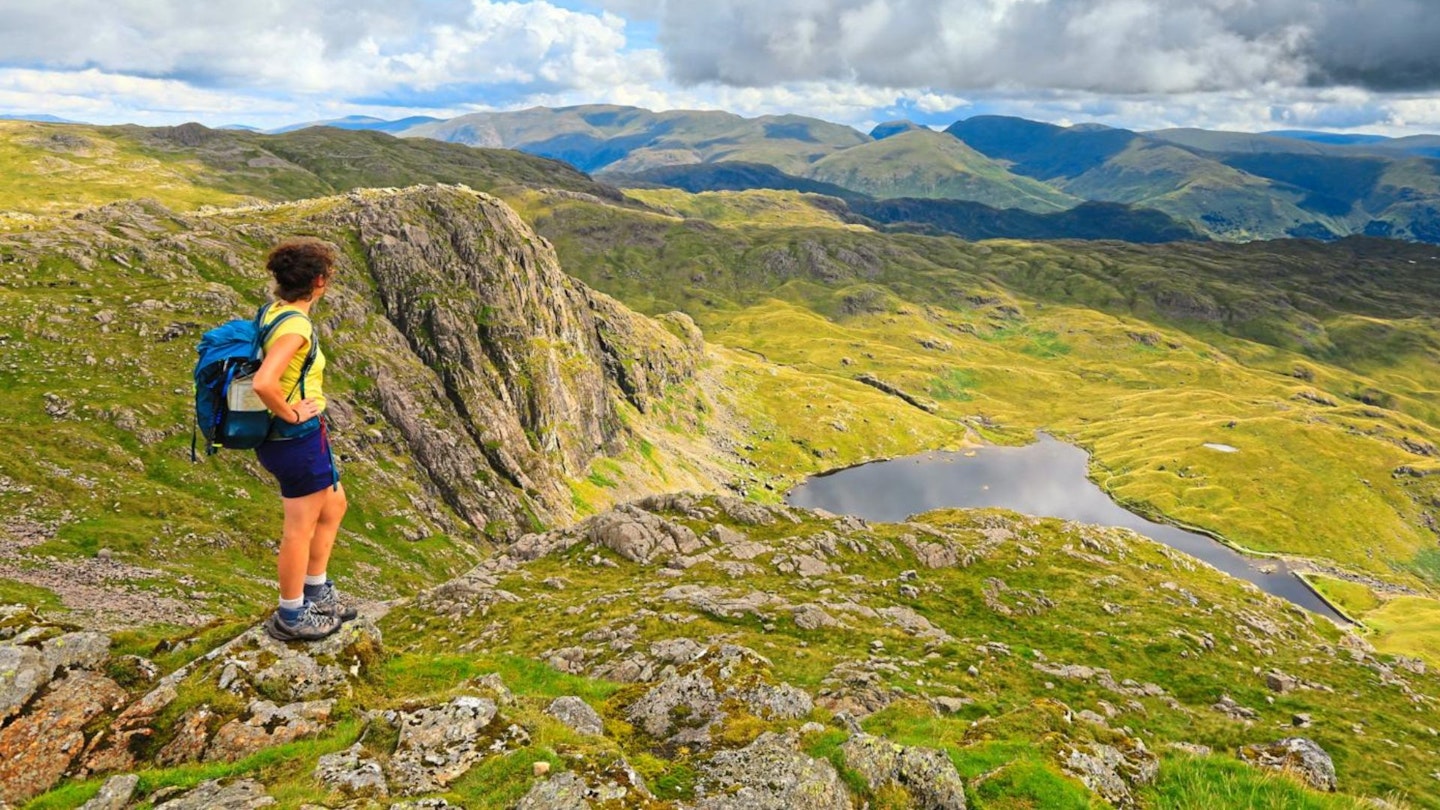
What length of shorts is best?
Longer length shorts provide your thighs with a little more protection but may not be as agile for scrambling. Short shorts are less restrictive, but the look isn’t to everybody’s tastes. The lengths of shorts are categorised by inseam length, which is the distance between the crotch and the hem.
How should hiking shorts fit?
A comfy, non-restrictive fit around the waist and legs is absolutely crucial. With an elasticated waist, the fit will be more forgiving. If not it’s more important that the size is spot-on. Also consider whether you prefer baggier, more ventilated legs, or a slimmer, more athletic fit.
How many pockets do I need?
Do you just need a small pocket in which to keep change for an ice cream, or cavernous pouches for a map and guidebook? Large cargo pockets will add weight to shorts but may provide useful storage.
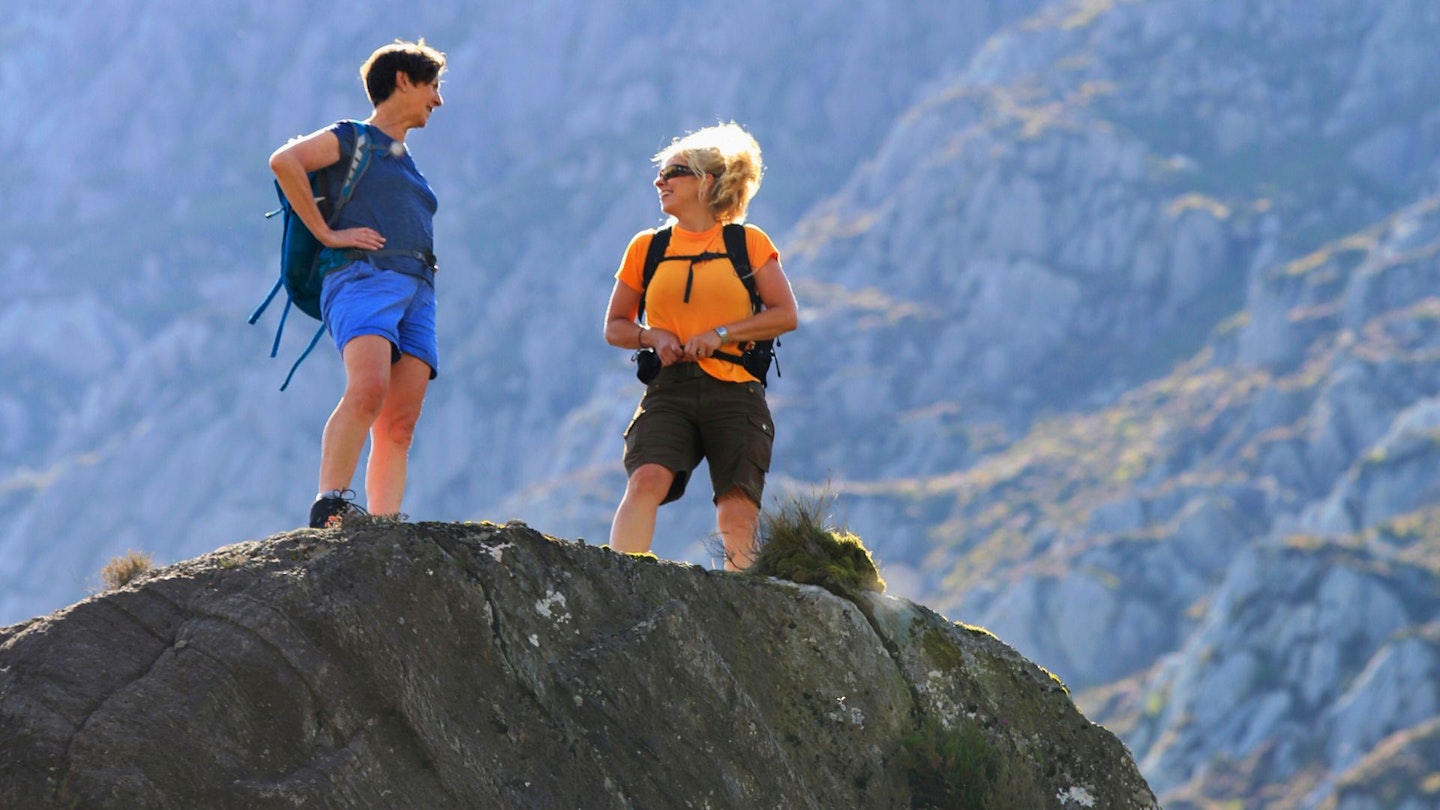
What materials are best?
Hiking shorts are usually made from nylon or polyester – materials that provide a good balance between weight, durability, moisture wicking, protection and breathability. Using recycled nylon and polyester helps improve sustainability and a PFC-free DWR if it has one.
Many shorts fabrics are also blended with elastane (also called spandex or Lycra) for added stretch. It improves freedom of movement, makes a closer fit and increases comfort. Two-way stretch fabrics stretch either vertically or horizontally. Four-way stretch fabrics stretch in both ways, crosswise and lengthwise.
Some brands use natural fibres like bamboo or hemp, which are softer and do increase comfort and sustainability further. But, typically, cotton, bamboo, and hemp aren't as good in wet conditions as synthetic fibres.
What type of waistband is best?
Most hiking shorts feature belt loops, meaning you can use a belt (usually sold separately) to fine-tune the fit around your waist. Some shorts have more elasticated waistbands for an adjustable fit, while others have integrated belts. Shorts are commonly closed around the waist using a press stud, snap or flat button.
How we test hiking shorts
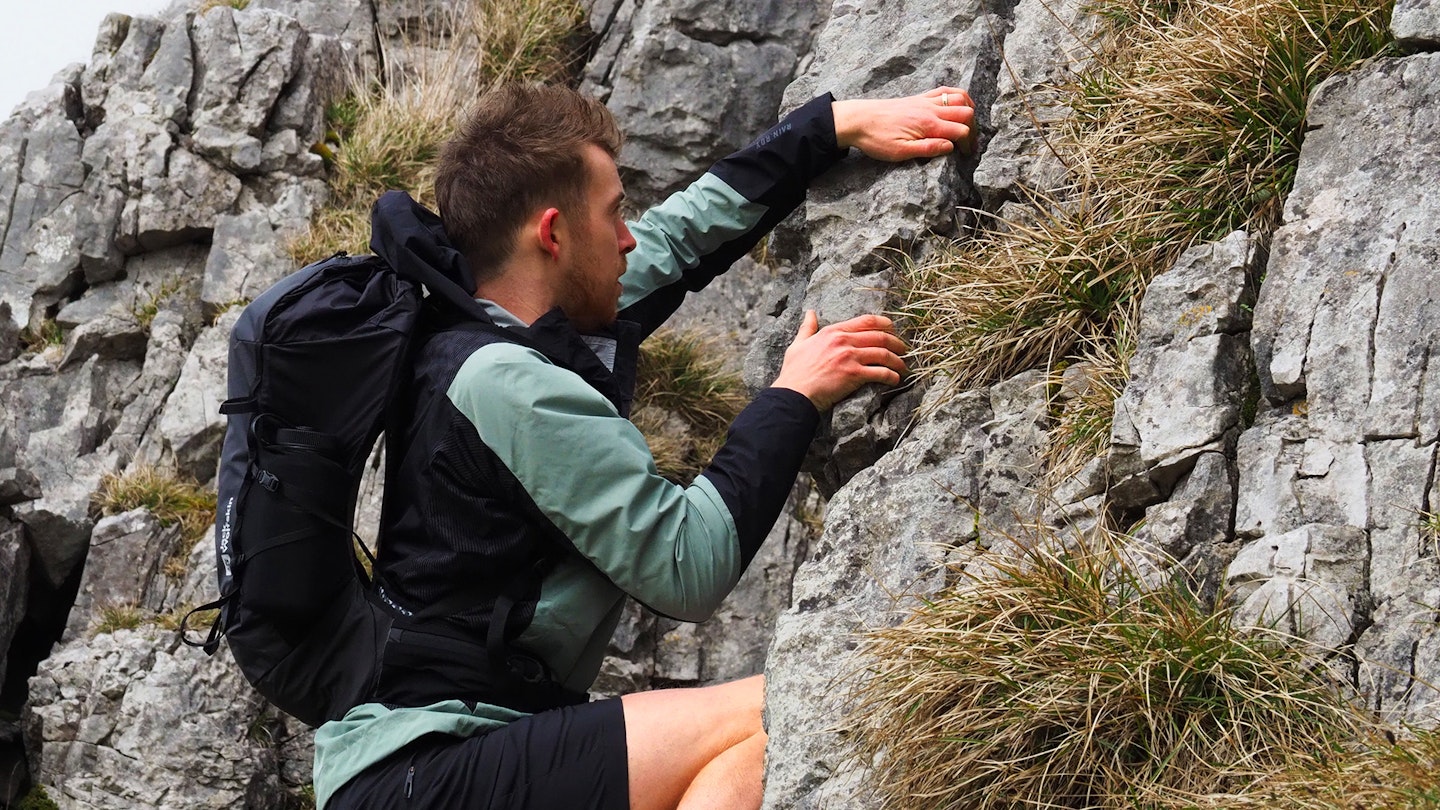
The vast majority of hiking shorts tested and recommended here were done so by Chris Williams (above), one of our staff writers and gear testers. As a hiking shorts fan, Chris doesn't use them exclusively in summer, but prefers to wear them year-round in all but frigid conditions.
Chris has been with us since 2021 and has several years of journalistic and outdoor industry experience.

